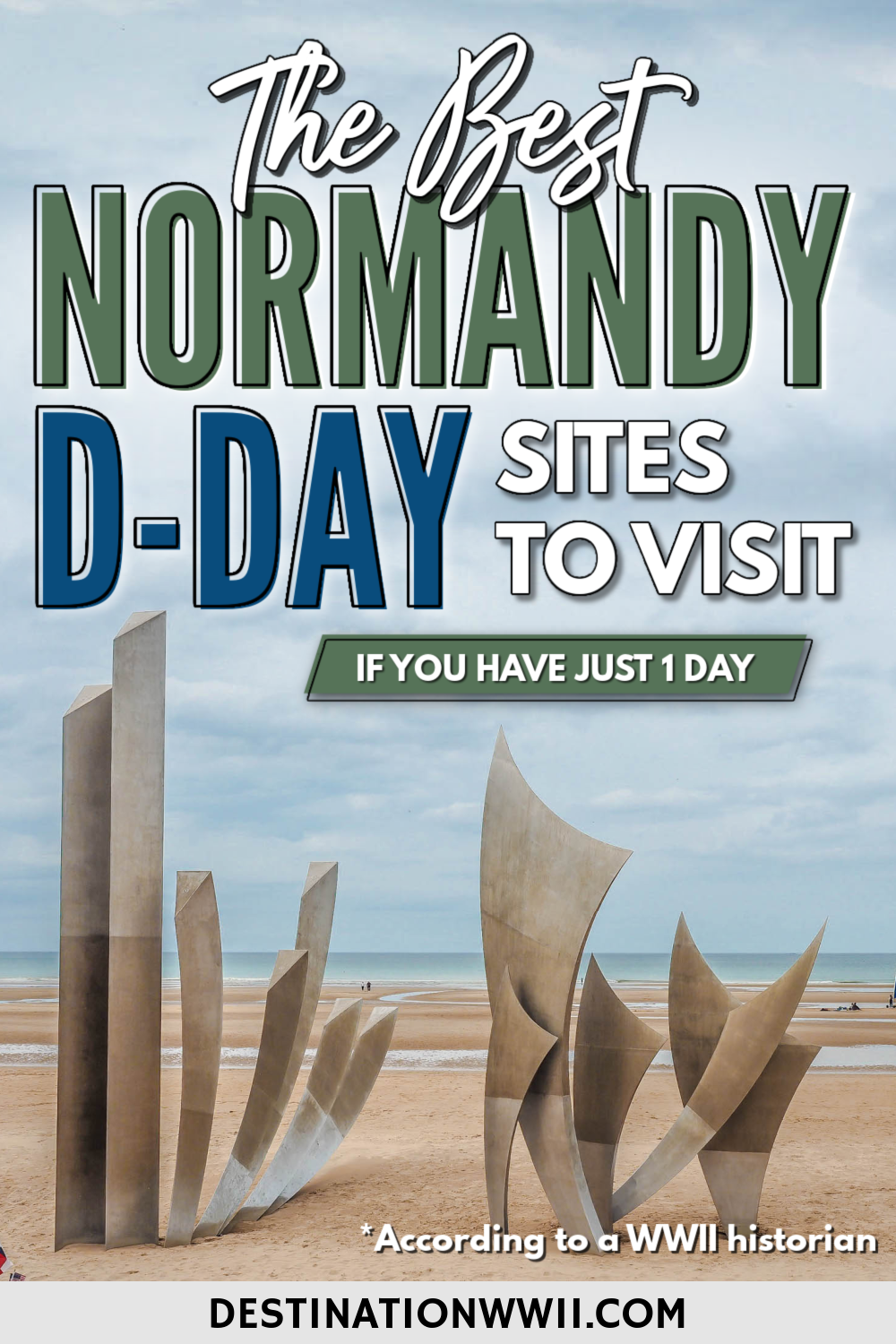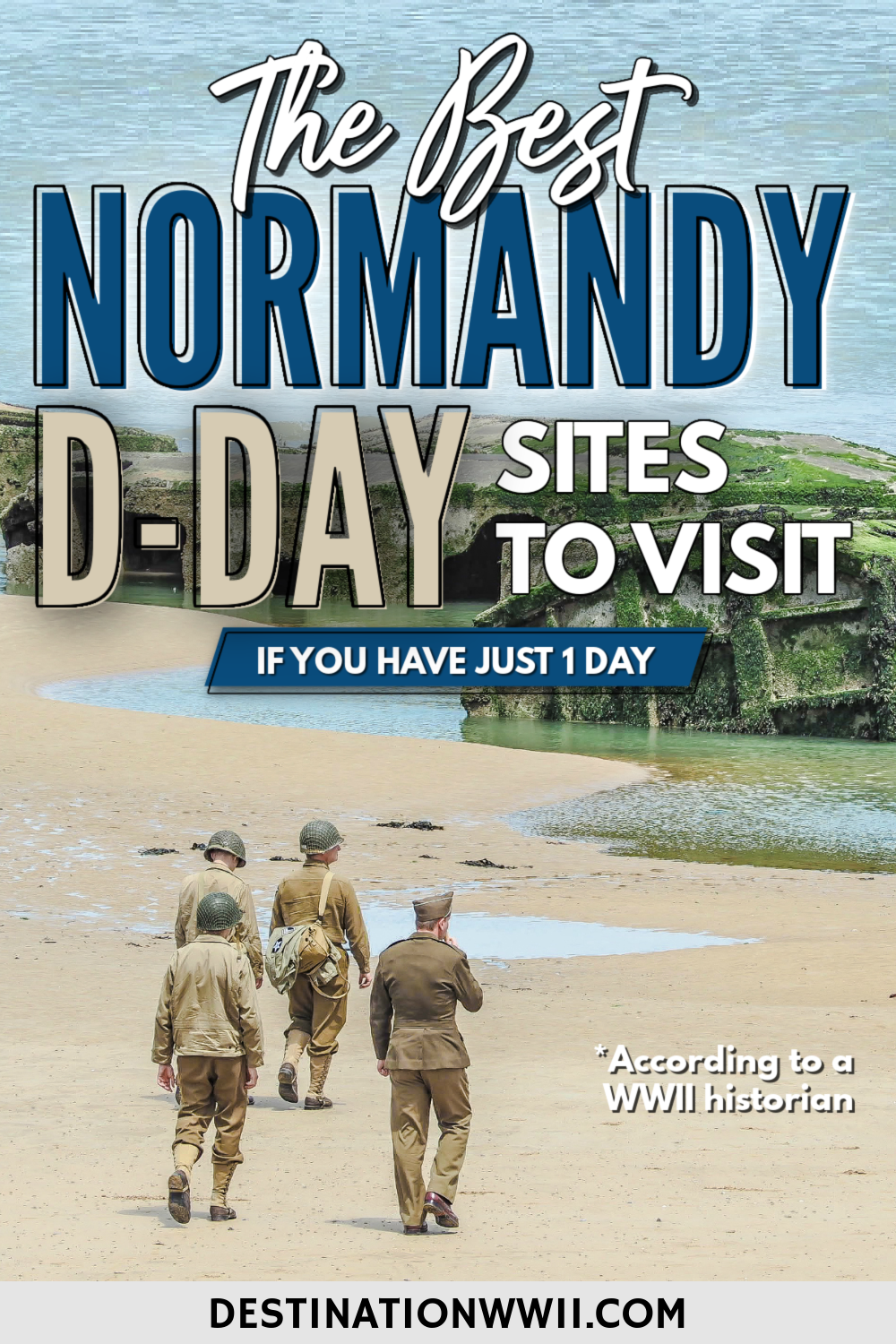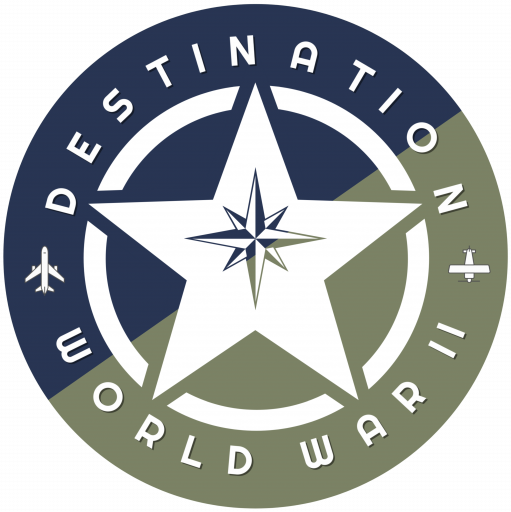Seeing for yourself the best D-Day sites to visit in Normandy is an absolute must-do for any World War II enthusiast. In fact, it tops the bucket list of every one of them that I know.
It’s not always the most “fun” vacation, but this collection of sites absolutely beats the hell out of anything you’ll see in Paris or the Loire Valley. You can have your van Gogh and your Chateaux; just give me a war museum and a few battle sites and I’ll be a happy—but still really sad—camper. (The WWII sites in Paris are definitely worth checking out though!)
But the best part? You can still see many of the best D-Day sites to visit in Normandy even if you only have one day. So if you do only have one day to spend touring the World War II sites in Normandy, start with these 7 places.
(I can verify the accuracy of this itinerary as I have personally road-tested all 7 of these sites myself in one unforgettable day. But if you have more days, definitely check out my 3-day Normandy itinerary!)
If you’d prefer to take a tour, check out my post on the 10 best local Normandy D-Day tours or my list of best Normandy tours from Paris to take this year. (And book ASAP!)
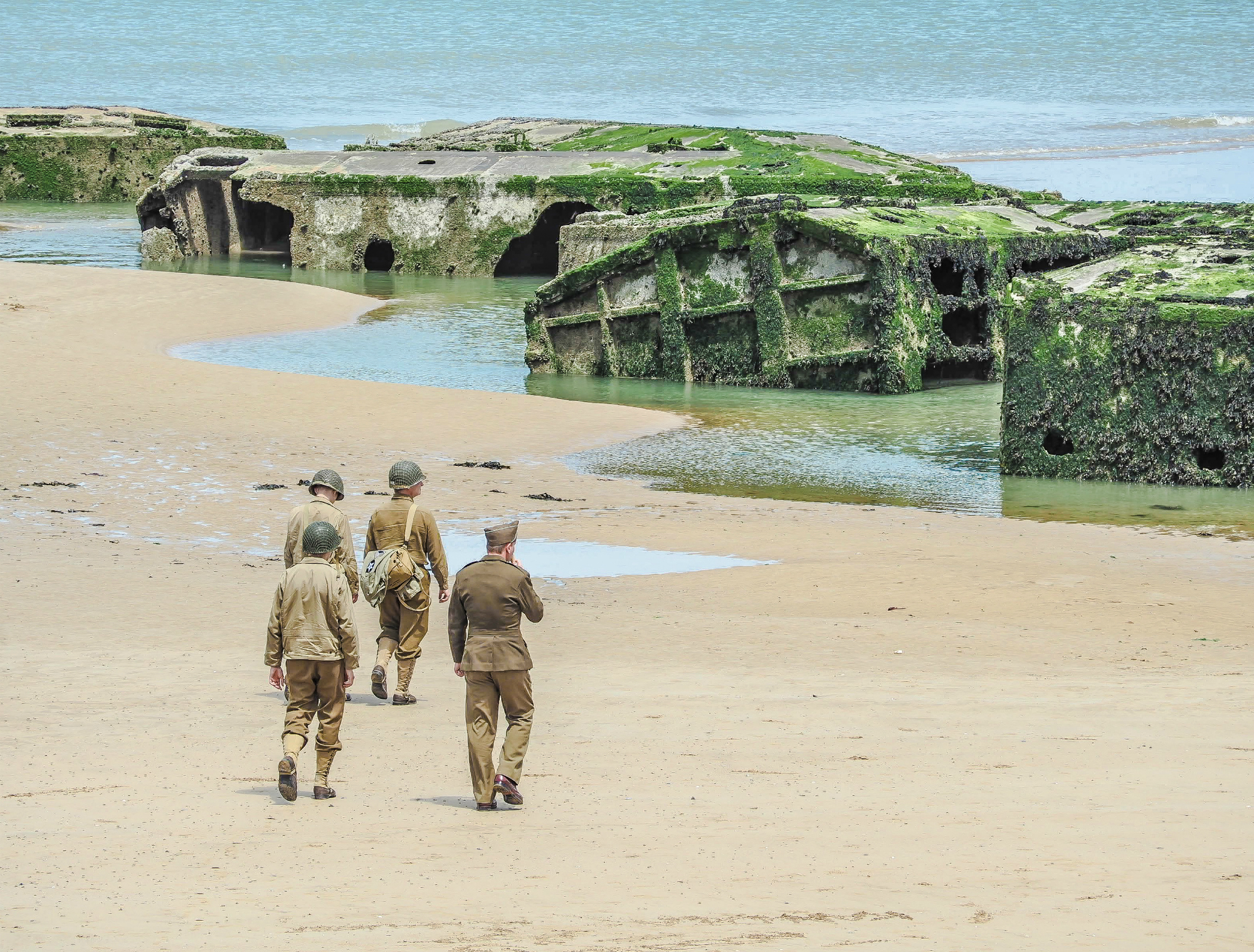
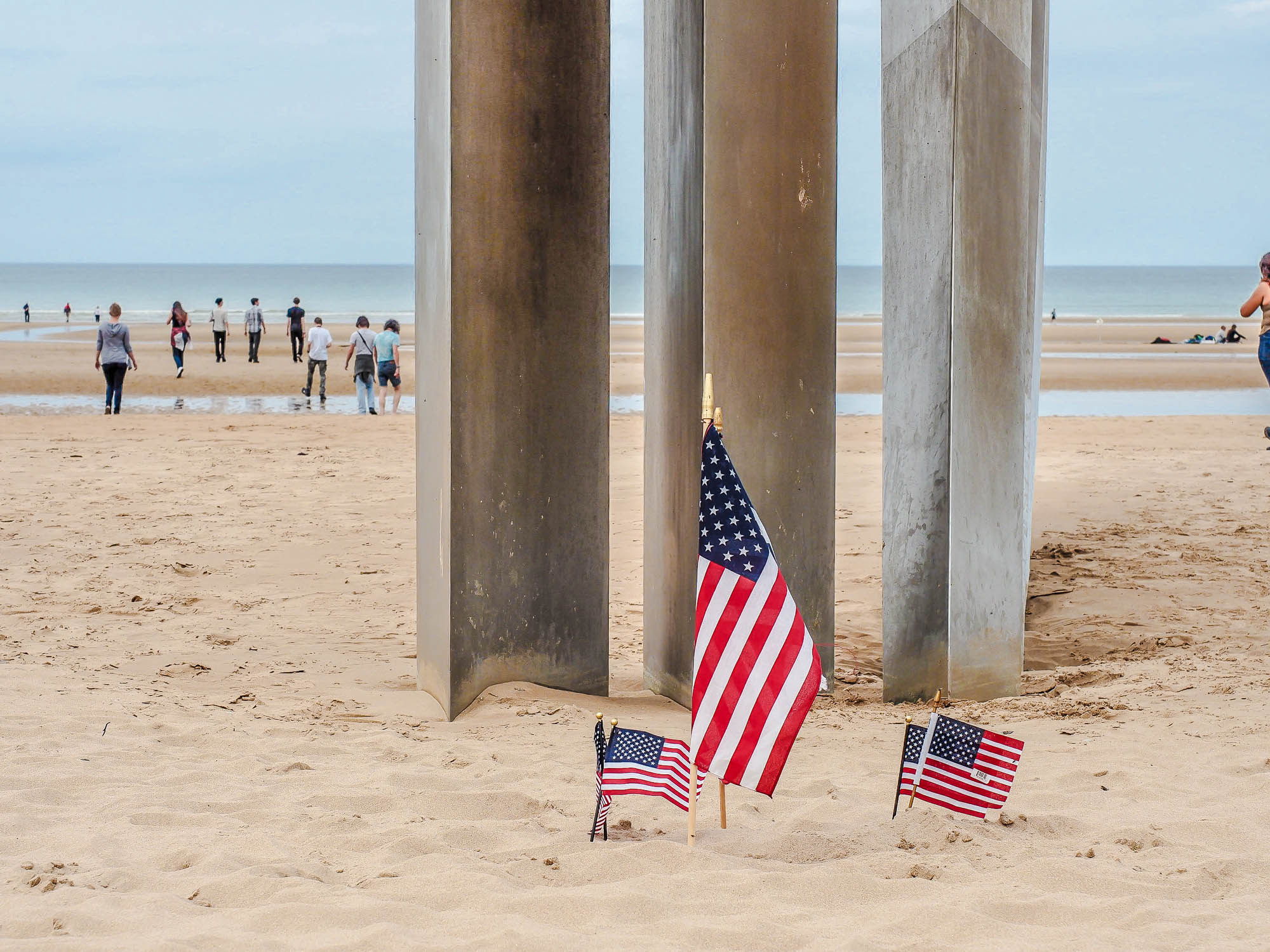
The best D-Day sites to visit in Normandy
I believe the overall goal of travel is to inspire you, change you, make you into a better human being–and a visit to these D-Day sites will do just that. Can the Eiffel Tower say that?
Now there are a lot of D-Day sites to visit in Normandy, France, as you can imagine—memorials, museums, battlefields, cemeteries, and tons of other random things. Are they all worth a visit? Probably. Do you have three months to spend in France? Probably not.
So, I’ve chosen seven that I feel are the best D-Day sites to visit in Normandy for when you don’t have much time but still want a well-rounded, diverse experience.
Pro tip: If you haven’t planned your trip to Normandy yet, try to visit as close to D-Day as possible. Get 9 more helpful Normandy travel tips here.
Map of the best D-Day sites in Normandy
The map below contains all 7 of the sites mentioned in this post. To save this map: Click on the star ⭑ next to the map’s title to save in your Google Maps. To use this map: Open Google Maps on your phone, click “Saved” at the bottom, then click “Maps.”
Definitely check out my helpful guide to driving around Normandy with all the stuff you need to know (including the details of my speeding ticket).
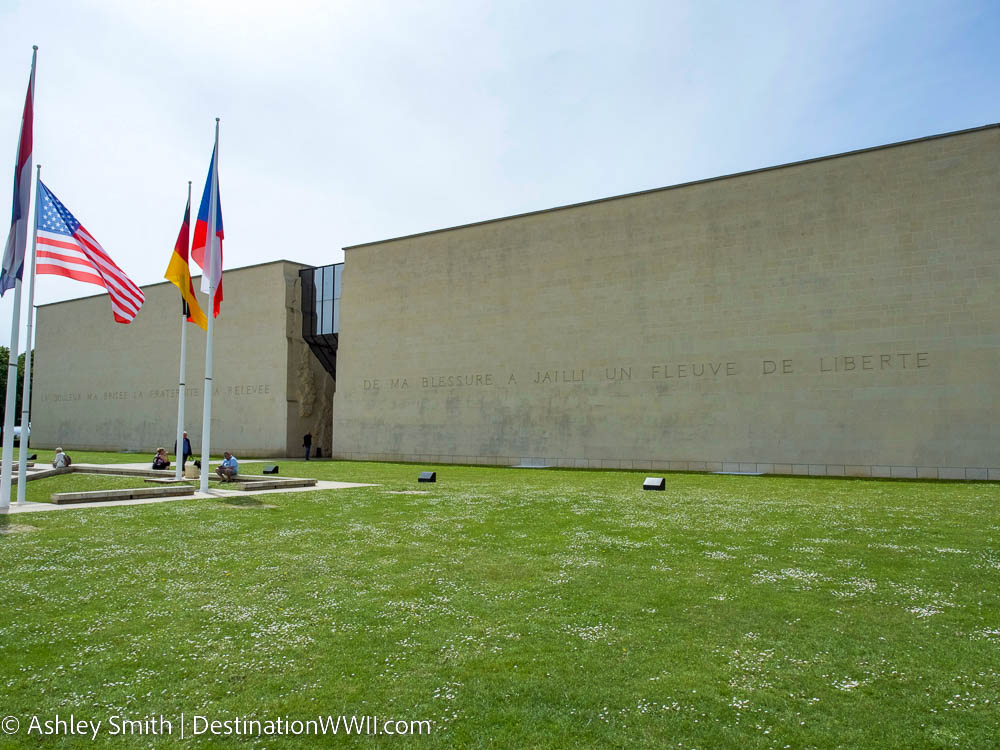
1. Caen Memorial Museum
The Caen Memorial and Museum, located in the British Sword Beach sector, opened on D-Day in 1988. Many regard it as the best World War II museum in France. Visit on or around D-Day (like I did) and the abundance of decorated war veterans there to greet you will be a great introduction.
The Caen Museum was built on top of the former underground headquarters of a German general and is every inch a lesson in symbolism.
You enter the building through a small door in the middle of a huge flat façade representing the Allies’ breach of the seemingly impenetrable Nazi Atlantic wall. The entrance into the museum itself is a downward spiral staircase into a dark underground symbolizing the decent into war/Hell.
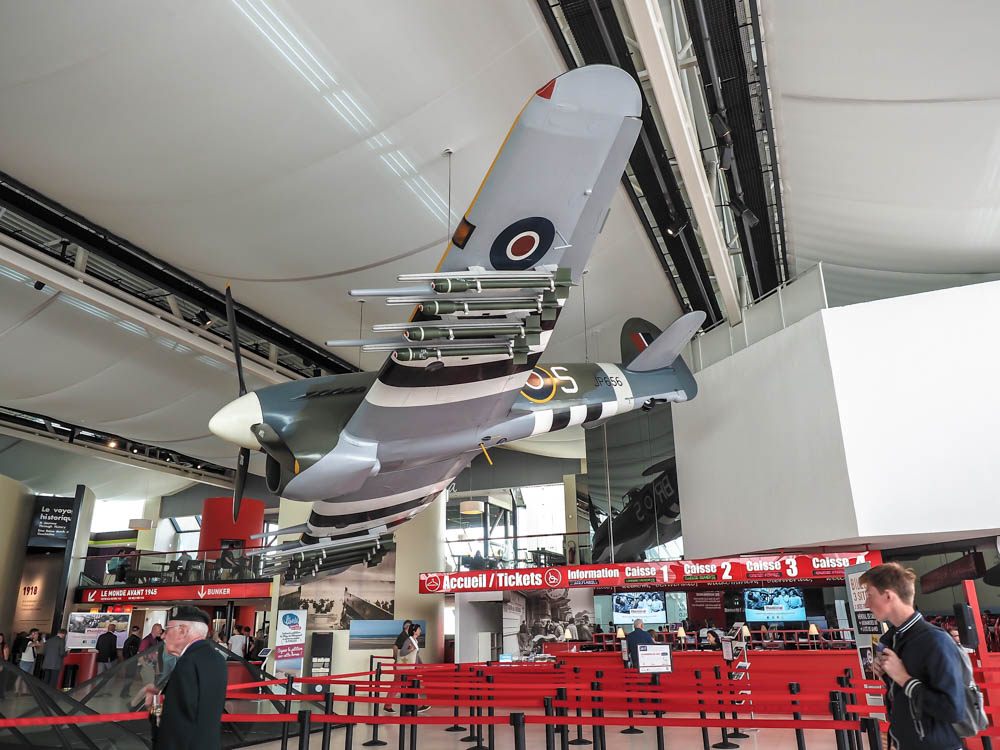
The museum covers the subjects of:
- The start and globalization of the war
- The various resistance movements
- Genocide and mass violence
- Liberation and the end of the war
- The D-Day landings and the Battle of Normandy (to name a few)
- And has a strong focus on the topic of peace
The museum offers a movie theater, a gift shop that got most of my travel money, the underground bunker of German General Wilhelm Richter, a café and restaurant, and three gardens dedicated to American, Canadian, and British soldiers who died in Normandy.
Also read: Which is the Best D-Day Beach to Visit in Normandy?
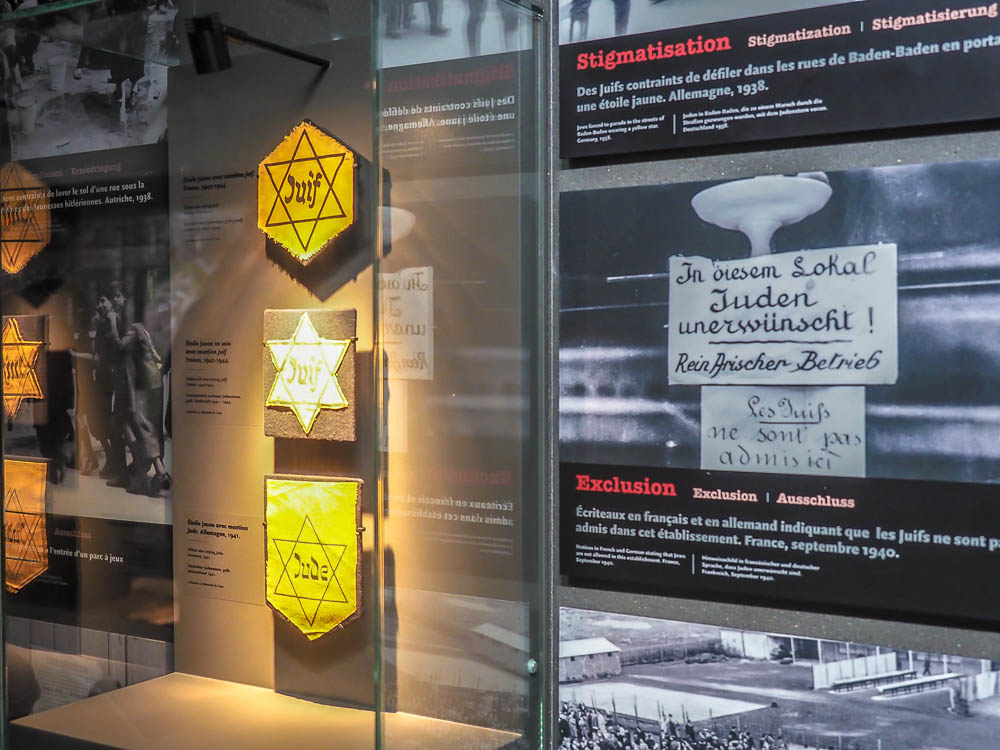
Why the Caen Museum is one of the best D-Day sites to visit in Normandy
For starters, it’s one of the most comprehensive museums on the topic of World War II.
It’s also extremely visual. It displays countless historical artifacts, artwork, video and sound recordings, newsreels, props and replicas, maps, and more. This museum has everything: airplanes, jeeps, tanks, artifacts of the times, and unexploded bombs that only worried me a little bit.
A large part of the museum focuses specifically on the D-Day landings and the Battle of Normandy. Which is where you are and what you probably came to learn about.
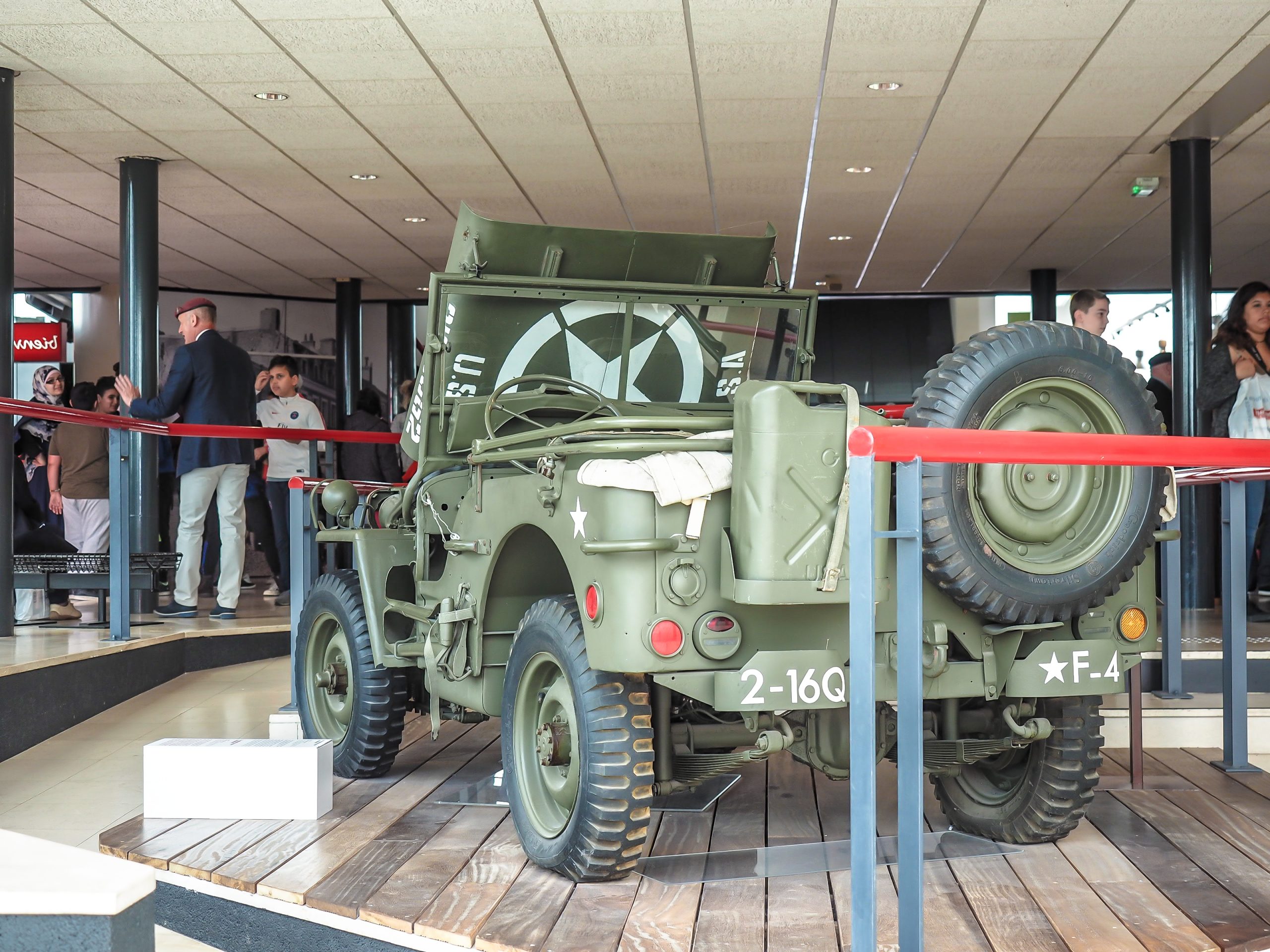
You can also meet war veterans. I visited the Caen Museum on June 8th (two days after the D-Day anniversary) and the place was full of uniformed British war veterans, many from World War II, who were excited to chat with visitors.
Meeting so many veterans in Normandy just two days after the D-Day anniversary will give you all the warms and fuzzies, and probably a teary eye or two.
If you want to check out more museums while you’re in Normandy, you might like my post on 18 must-visit Normandy museums for WWII enthusiasts. This area has museums dedicated to just about every part of D-Day and the Battle of Normandy (and beyond).
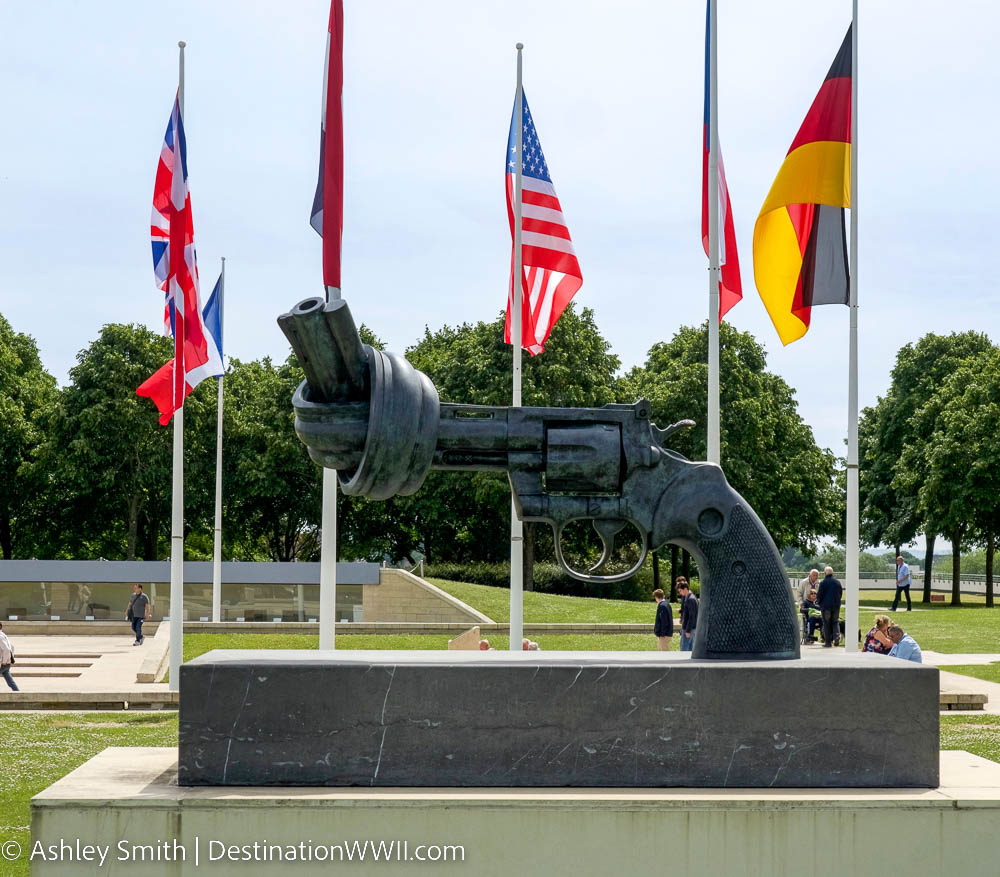
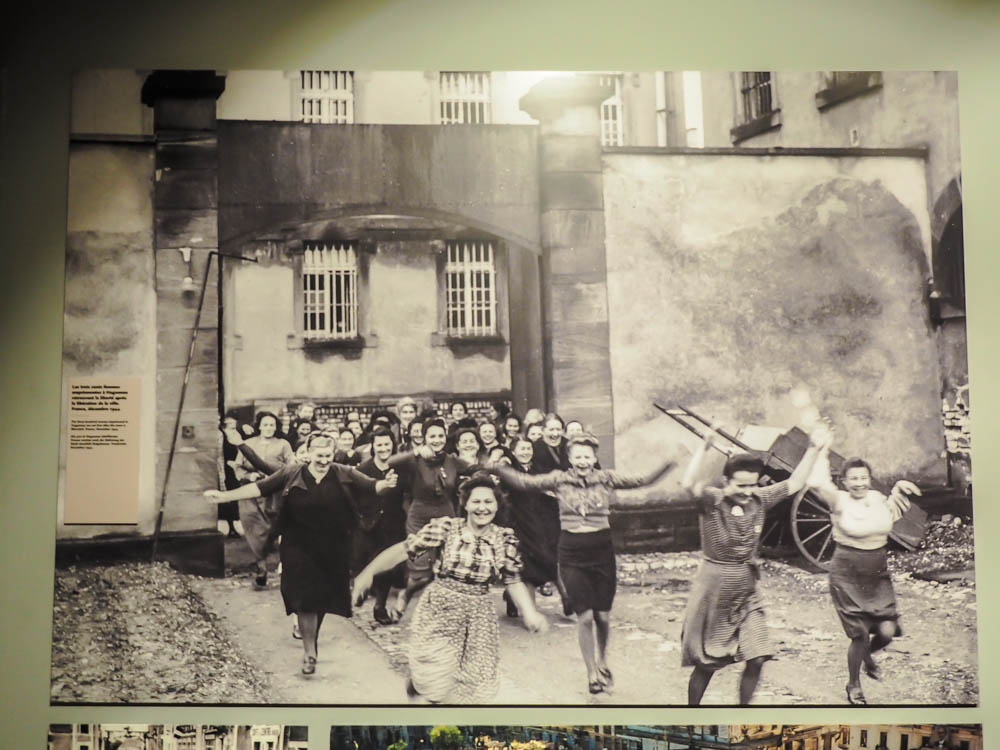
2. Arromanches-les-Bains
I’m in love with the town of Arromanches–the small seaside town famous for its artificial “Mulberry” harbors. The town is charming as heck and at the center of the Gold Beach landing zone. (Only around 600 people live there, but that’s still the most that ever have.) It played an invaluable part in the D-Day landings, hence, the entirety of World War II.
Arromanches-les-Bains in World War II
It was here that the Allies built their artificial, “temporary” harbors to facilitate the unloading of vehicles, materials, and people into Europe. These Mulberry Harbors (as they’re often called) had, by June 12, 1944, helped bring 300,000 men, 54,000 vehicles, and 104,000 tons of supplies into Europe.
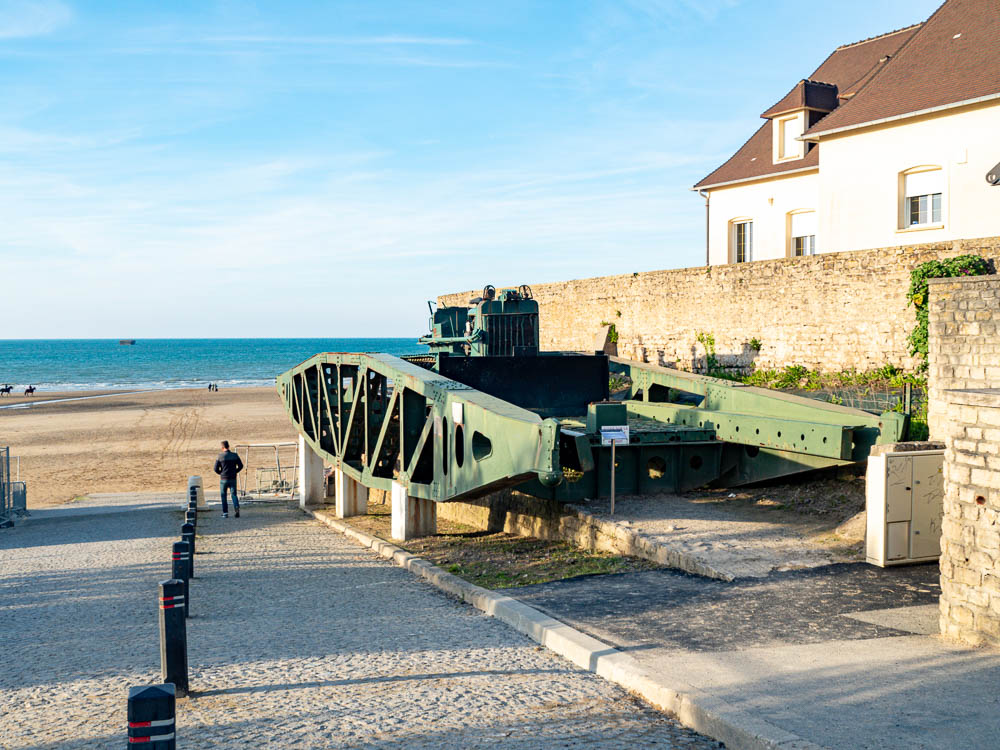
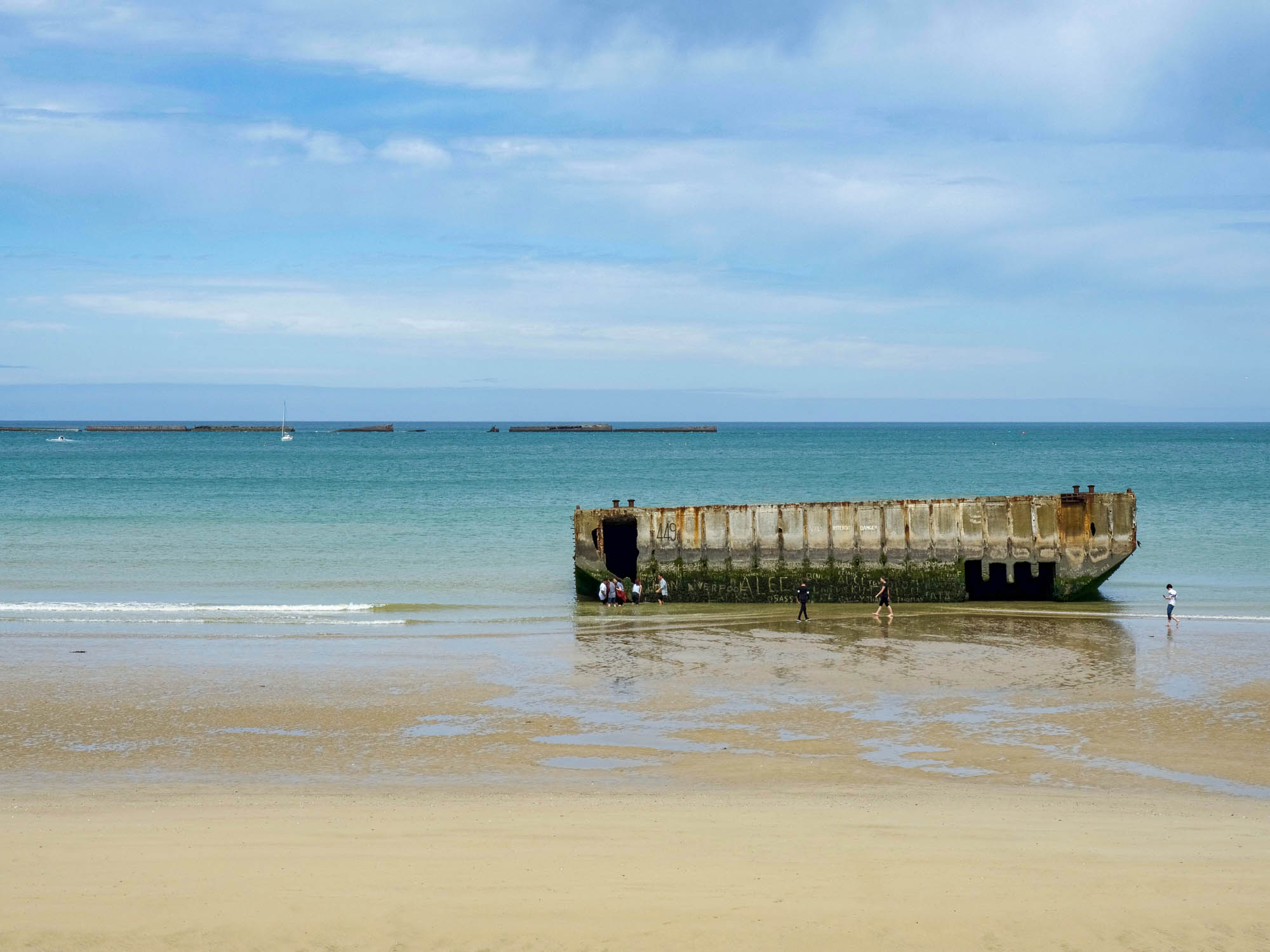
Arromanches today
Arromanches is dotted with memorials and D-Day gift shops, is easily stroll-able, and makes a great spot for a scenic lunch. What’s left of the artificial harbors can still be seen sitting out in the ocean.
Before or after lunch you can visit:
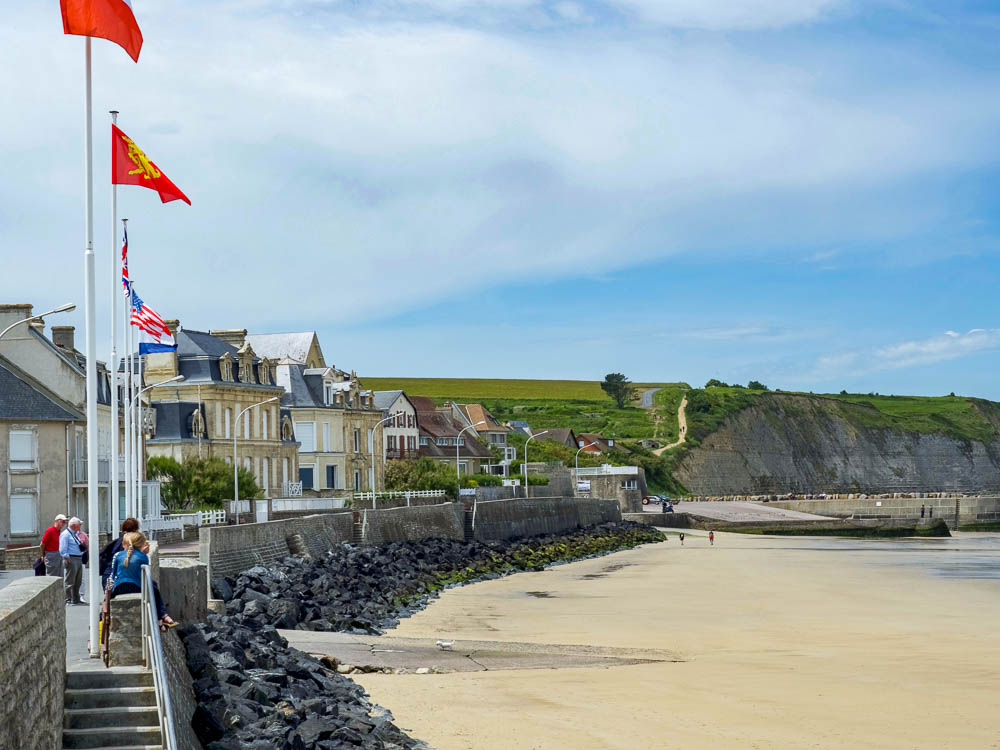
Also read: Visiting WW2 Sites With Kids: Should you? Can you? Here’s what you need to know.
Why Arromanches is one of the best D-Day sites to visit in Normandy
I especially love Arromanches for its ability to send me back in time. It was like I fell asleep at some point on the extremely short drive from the Caen Museum and woke up in the 1940s. This excited me to no end since time travel is my favorite kind of travel.
The town swarmed with war enthusiasts decked out in full World War II army uniforms of all ranks. World War II army Jeeps driven by uniformed soldiers jammed the parking lots and streets. And 1940s big band and swing blared into the town center from the speakers at the Musée du Débarquement.
The feeling of actually “being” in a historical time period is something you can’t get looking at artifacts in a museum.
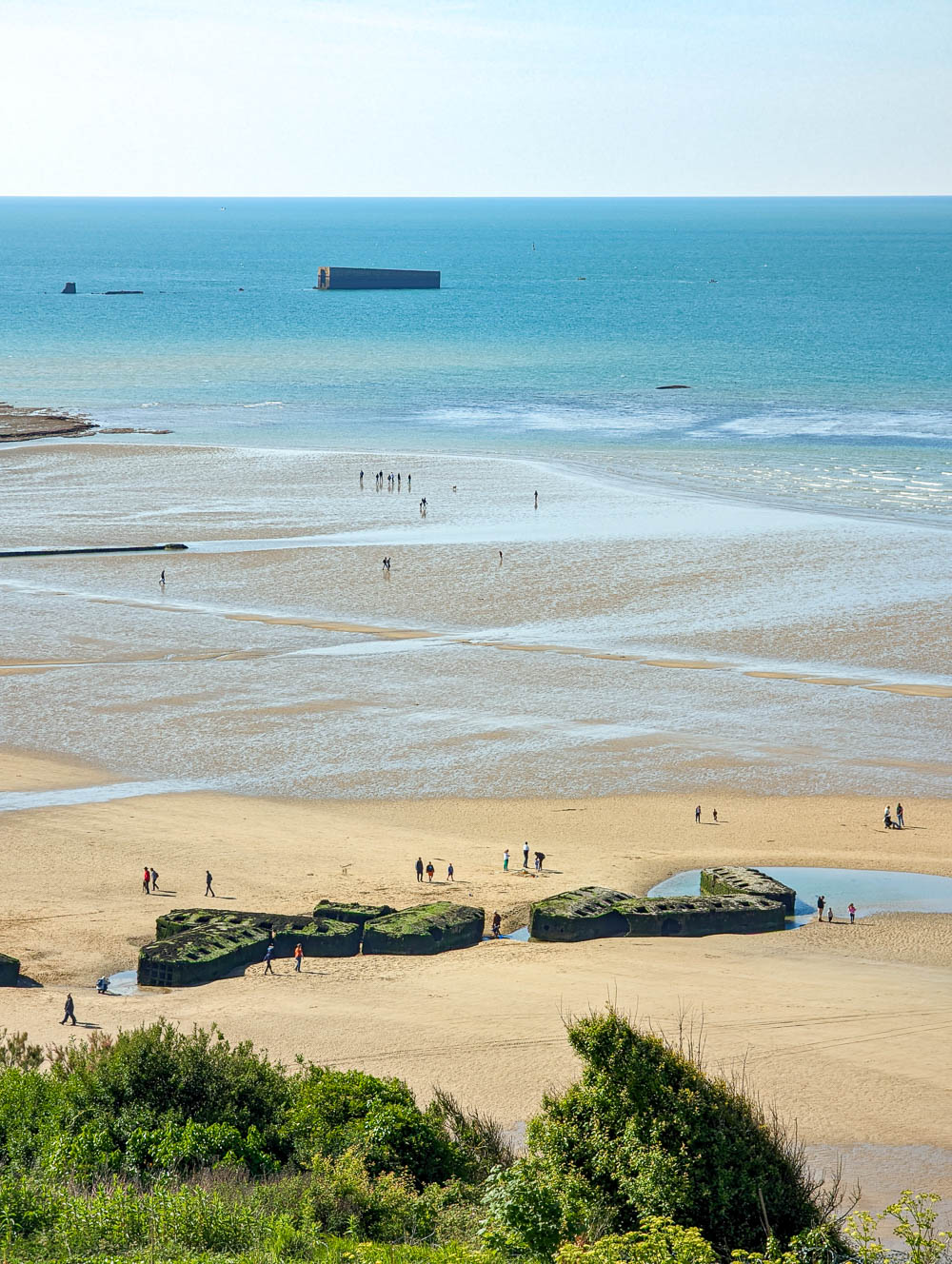
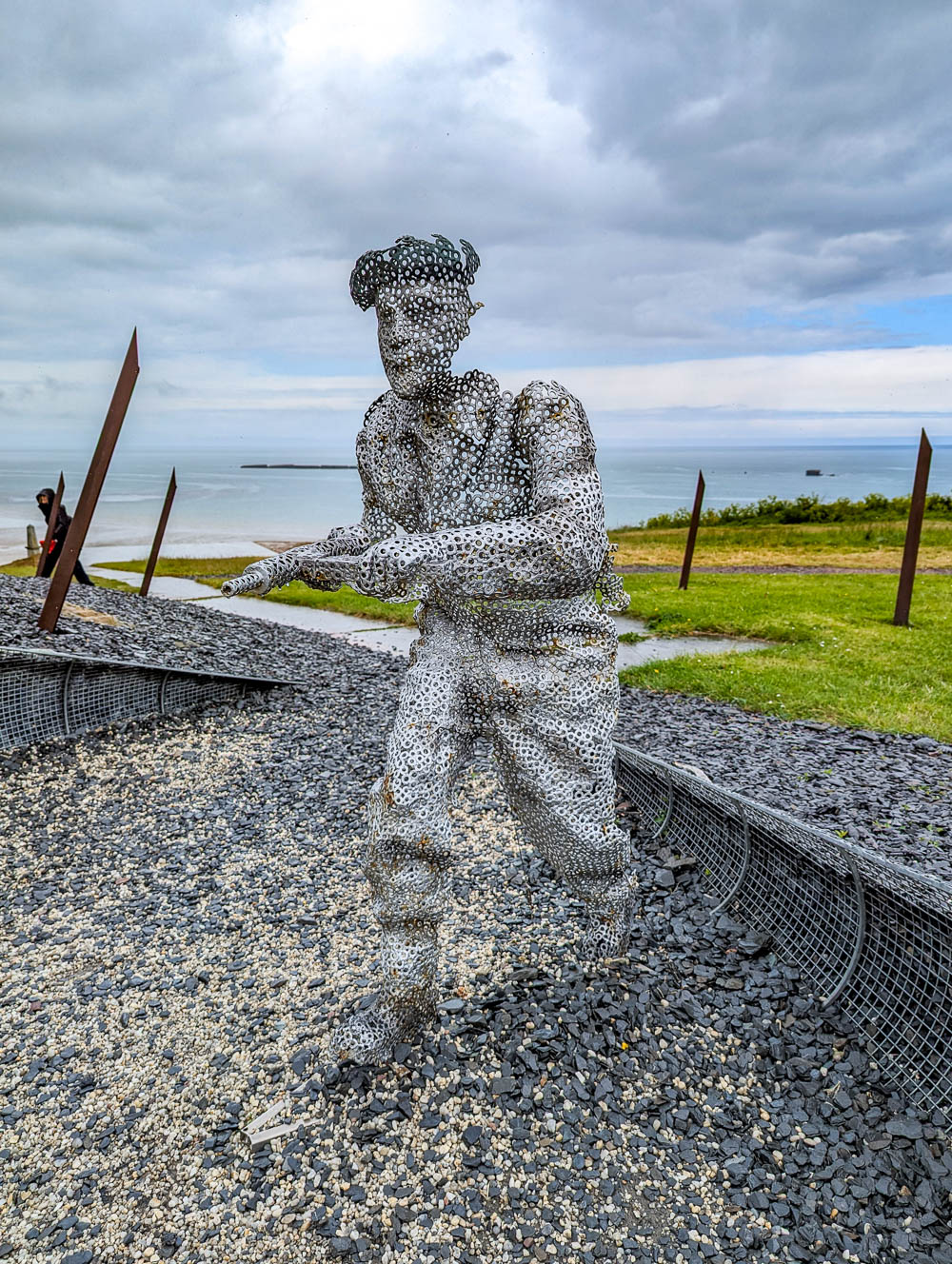
Arromanches played such an important role
Arromanches and its artificial harbors played such a huge role in the war you’d be crazy to skip this one. It’s majorly, enormously, hugely because of the artificial harbor at Arromanches that the Allies were able to help defeat Nazi Germany.
I told you how many men, vehicles, and supplies entered Europe through this harbor as of June 12th. But by the end of its use 10 months later, that number had increased to 2.5 million men, 500,000 vehicles, and 4 million tons of supplies.
Visible history
Remnants of the artificial harbor still sit out there in the water after all this time. I always prefer to see my historical artifacts in situ.
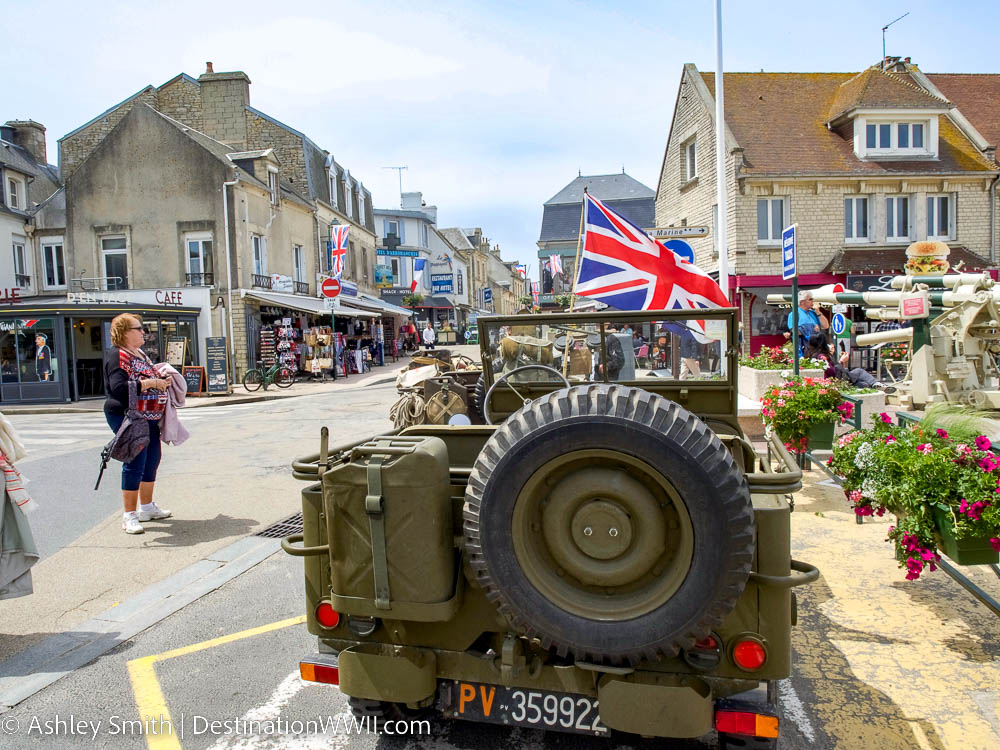
It’s not such a sad destination
Because the Allies wanted to use Arromanches for the building of their harbor, this was not designated one of the landing zones. This ensured the beach was preserved and free of war debris.
Because Arromanches was such a huge a contributor to the defeat of Nazi Germany and not a battleground, the atmosphere is completely unique. There’s swing music instead of silence, photography, Frisbee-throwing, and smiles and laughter instead of grief.
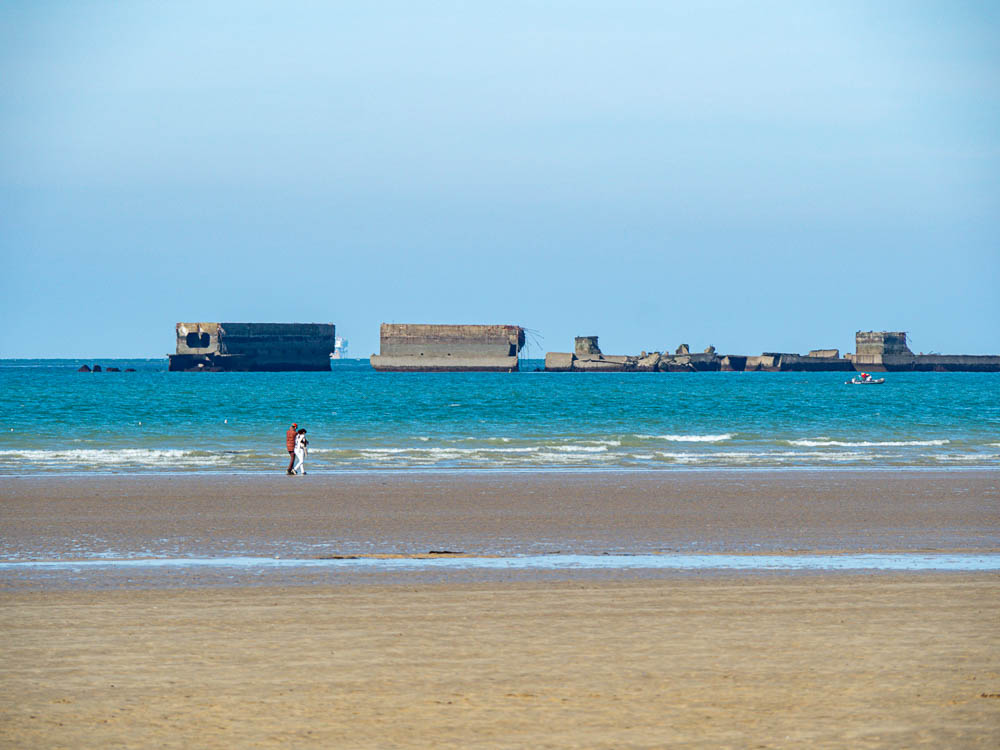
3. Longues-sur-Mer Battery
The Longues-sur-Mer battery, situated between the Omaha and Gold landing beaches, consists of four gun installations like the ones seen below and were used by the German troops on D-Day. Well, sort of.
Heavy bombing of this site by French and US ships the night before and the morning of the D-Day landings made getting any sort of use out of these about as difficult as saving that Private Ryan fellow (“It’s like finding a needle in a stack of needles.“).
British ships eventually demolished three of them, leaving the last one (only barely) operating for a little bit longer, though it didn’t really matter. The German crew of about 120 survivors surrendered the next morning.
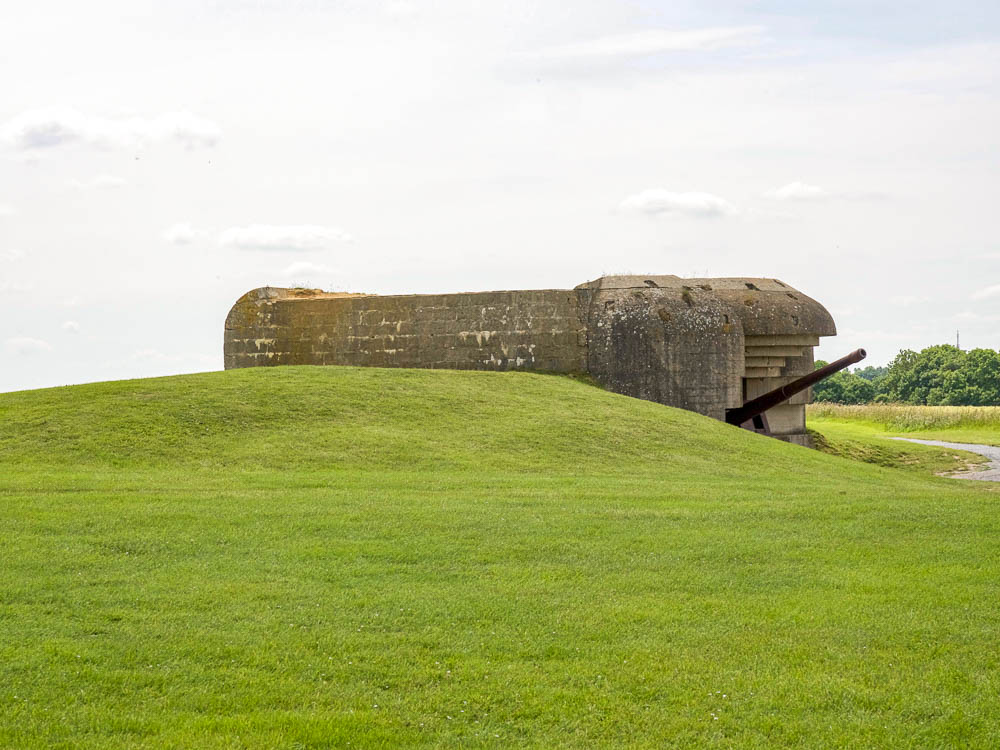
Why Longues-sur-Mer Battery is one of the best D-Day sites to visit in Normandy
The batteries and bunkers here are extremely well-preserved and look almost exactly like they did 80+ years ago. Plus, the Longues-sur-Mer battery is the only German coastal defense battery to be classified as an official historic monument (since 2001).
The Longues-sur-Mer battery also provides excellent views over the Atlantic and the D-Day landing beaches. From here you can really gauge the strength and power these guns had.
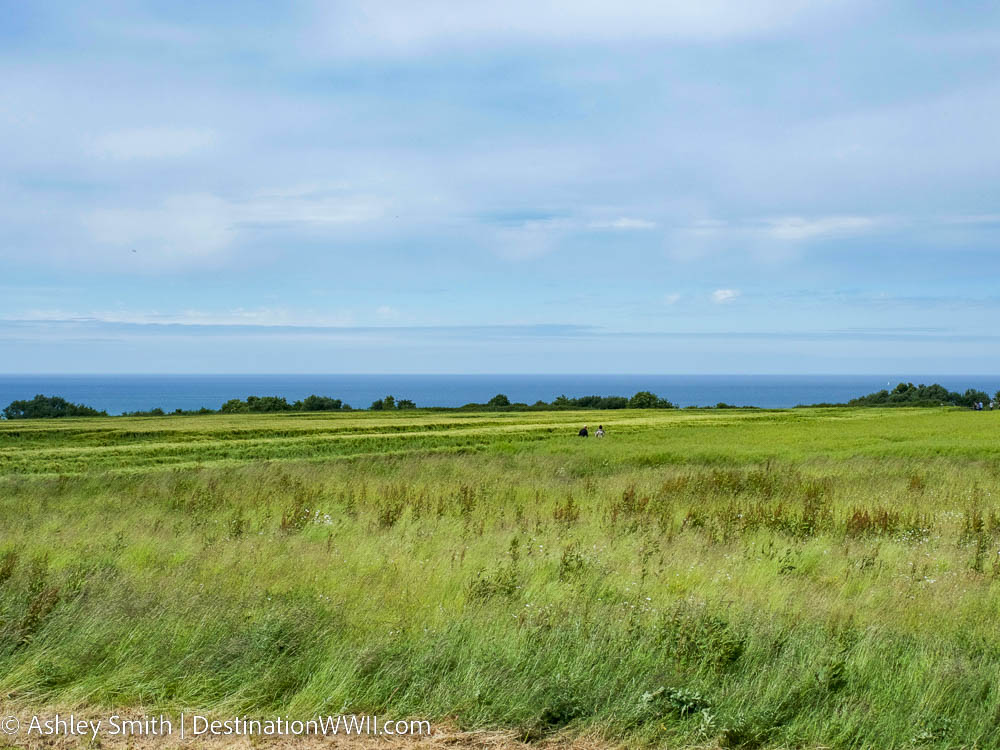
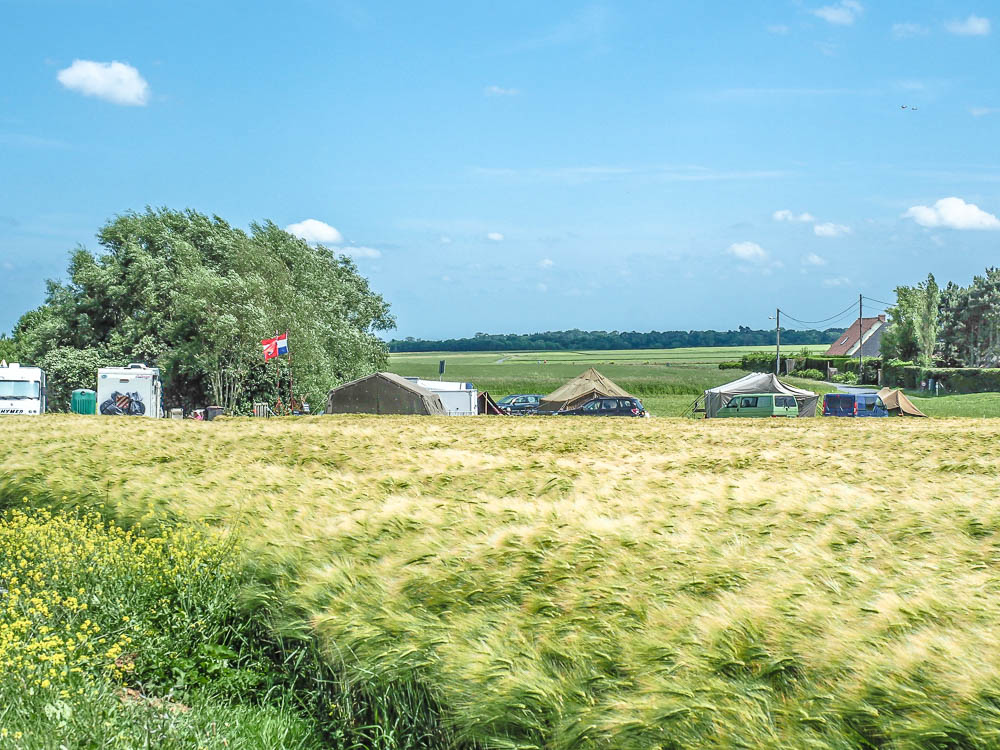
This area is so beautiful and somewhat off the beaten tourist path so you’ll probably be here close to alone. One thing I learned while checking out some of the best D-Day sites in Normandy is that to really be able to reflect on what you’re seeing and what happened at each one, it’s best to do so alone. Take a solo stroll along the path and imagine the chaos of this place on June 6, 1944.
Since I visited on June 8th, just two days after the D-Day anniversary, there was a group of reenactors camping out nearby in an authentic World War II campsite.
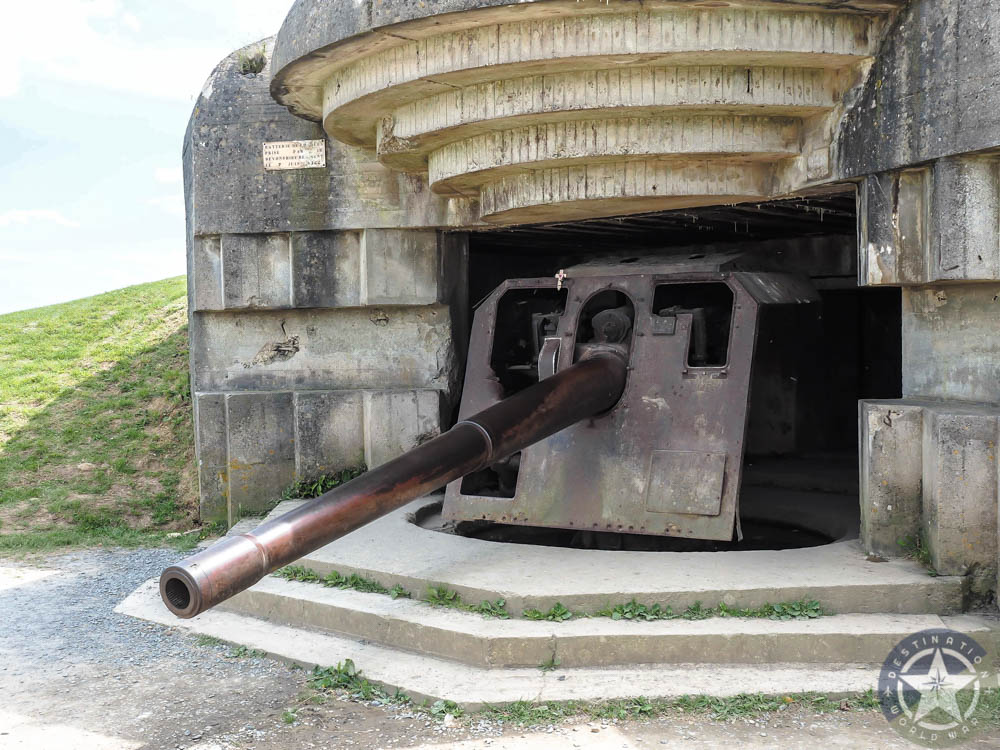
4. Normandy American Cemetery
The final scene of Saving Private Ryan, when old man Ryan arrives at the grave of Captain John Miller and says, “Tell me I have led a good life. Tell me I’m a good man” will pretty much sum up your visit to Normandy American Cemetery, where this and the opening scene of the movie took place.
You’ll ask yourself all the similar questions: These people died for me… am I good person? Have I proven their sacrifice worthwhile? Would they be proud of the life I’ve lived?
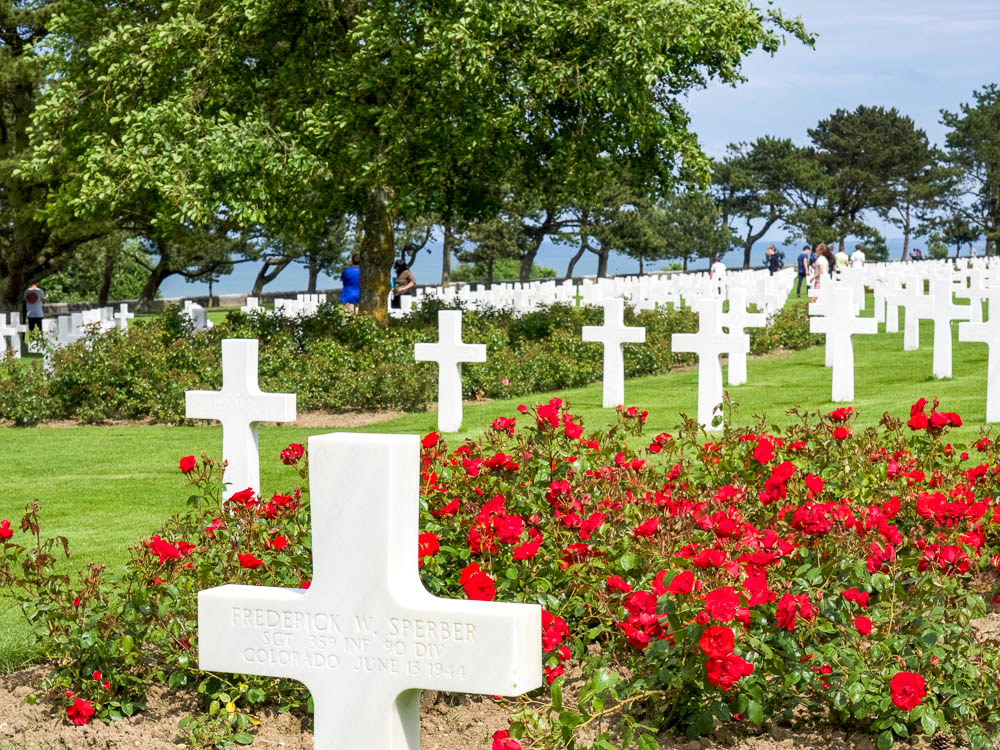
About Normandy American Cemetery
Normandy American Cemetery serves as the final resting place for 9,387 U.S. soldiers, most of them victims of the D-Day landings and ensuing battles. There are 9,238 Latin crosses, 149 Stars of David, and 1,557 names on the Walls of the Missing.
The cemetery overlooks (the strikingly picturesque) Omaha Beach and, because the French government gave this land to the United States free of charge and taxation to use forever, is considered American soil.
At Normandy American Cemetery you’ll find:
Having visited just after the D-Day anniversary, I also saw groups of uniformed World War II soldiers and a handful of jet flyovers. Surreal.
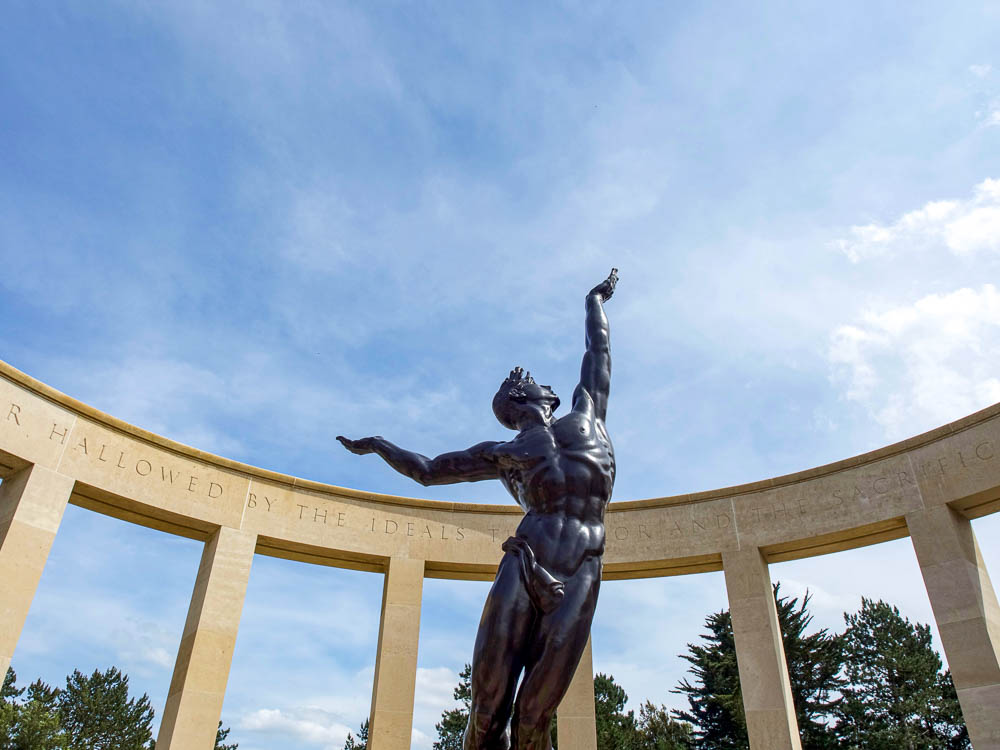
The most emotional site of the day
Of all the best D-Day sites to visit in Normandy, Normandy American Cemetery was the most emotional for me. Besides the fact that, at its very basic, it’s a cemetery, I think all the emotion comes from knowing so much about these soldiers and how, why, and for what they gave their lives.
I think part of the emotion is sadness, for what they and their families went through, but also the fact that I’ll never get to personally say Thank You. Part of it is confusion; how can humans do these things to other humans? And a large part is gratitude.
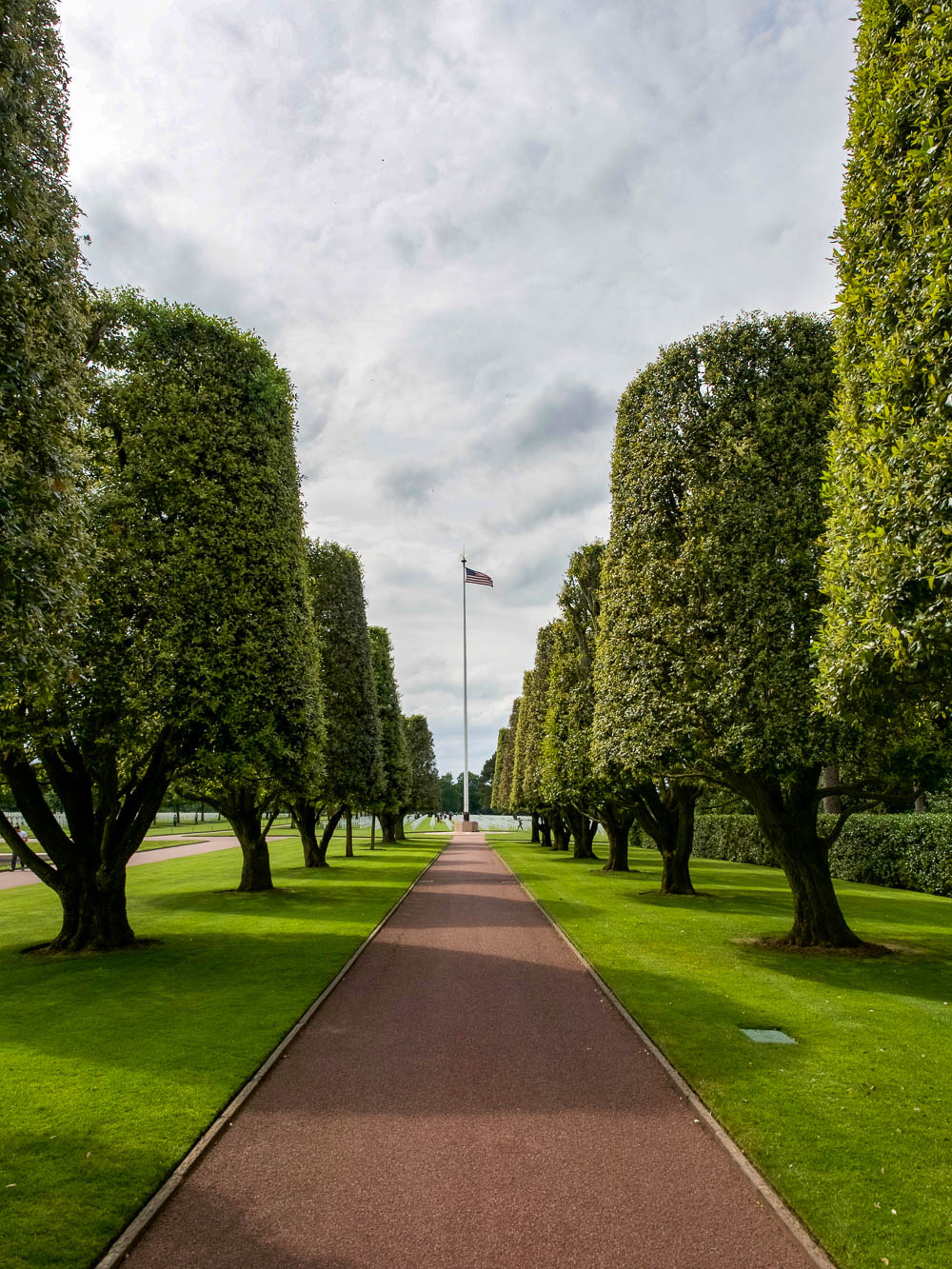
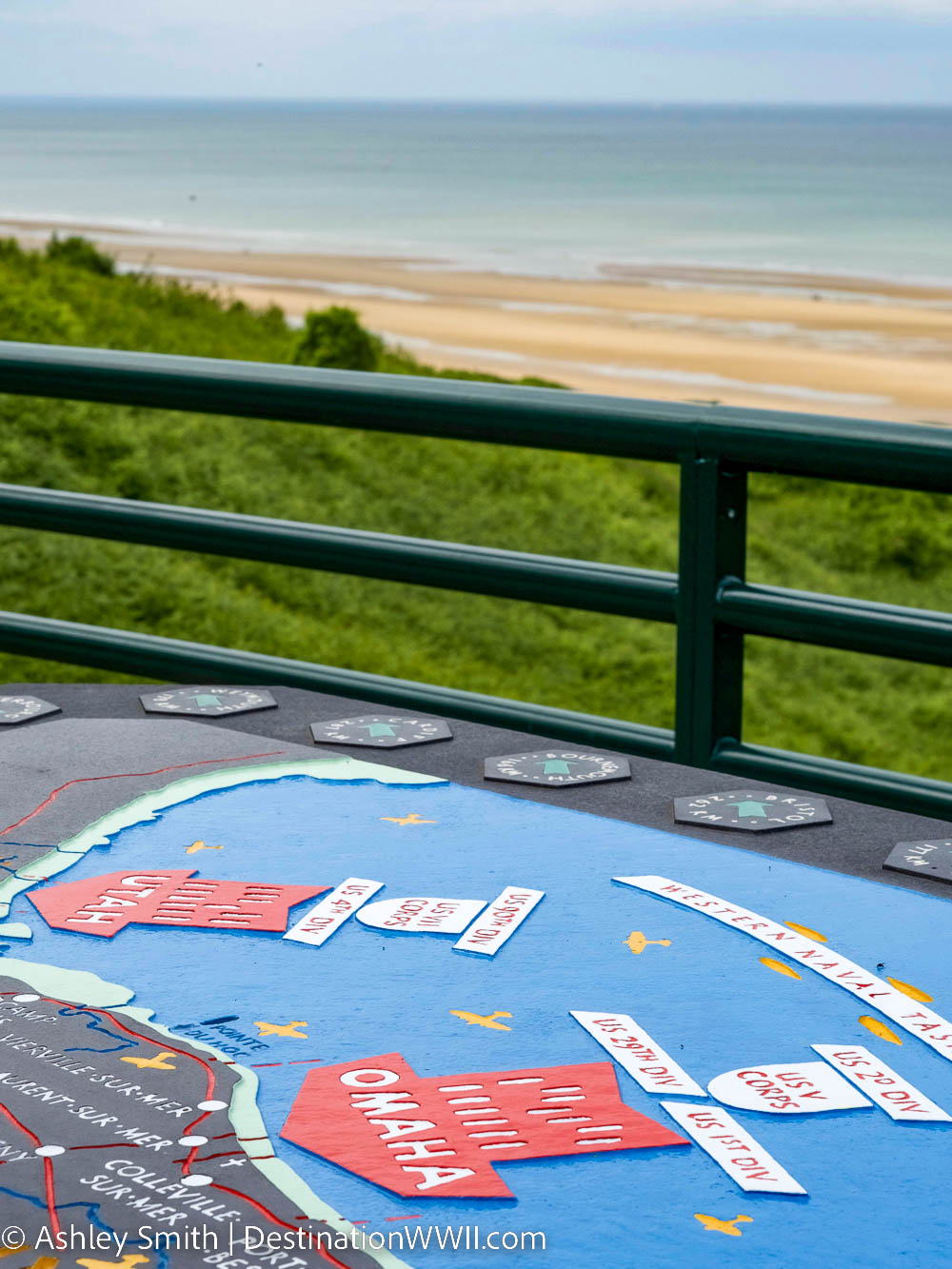
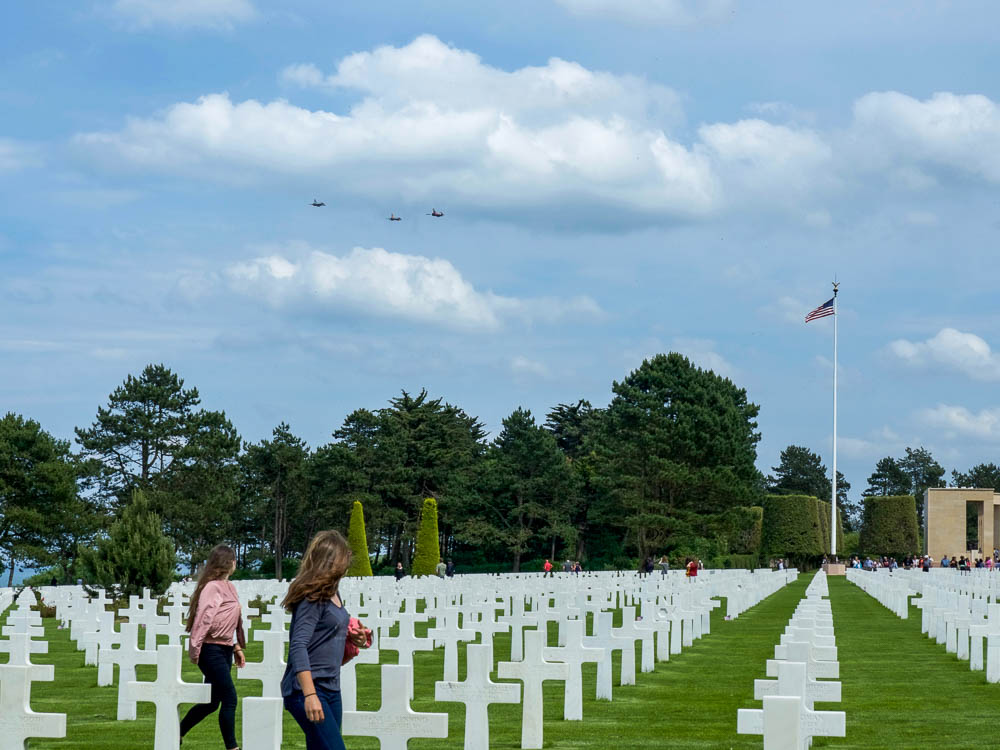
Why Normandy American Cemetery is one of the best D-Day sites to visit in Normandy
Because there are 9,387 (+1,557 more) men here that you need to say Thank You to. Every single thing you have and have ever had, and everything your parents and their parents have ever had and been able to do is owed to these 10,944 Americans (and then some).
Because of them, we exist today. Because of them, we live the kind of lives that are so free of concern our biggest complaints are that our steaks are undercooked and our flights are overbooked. You owe them all the thanks you’ve got in you.
An incredible visual
Seeing how far and wide the white crosses (and stars) span here is a great way to visualize just how many soldiers sacrificed themselves to put an end to Hitler and the Nazi threat. And remember, these are just a portion of the American fighters.
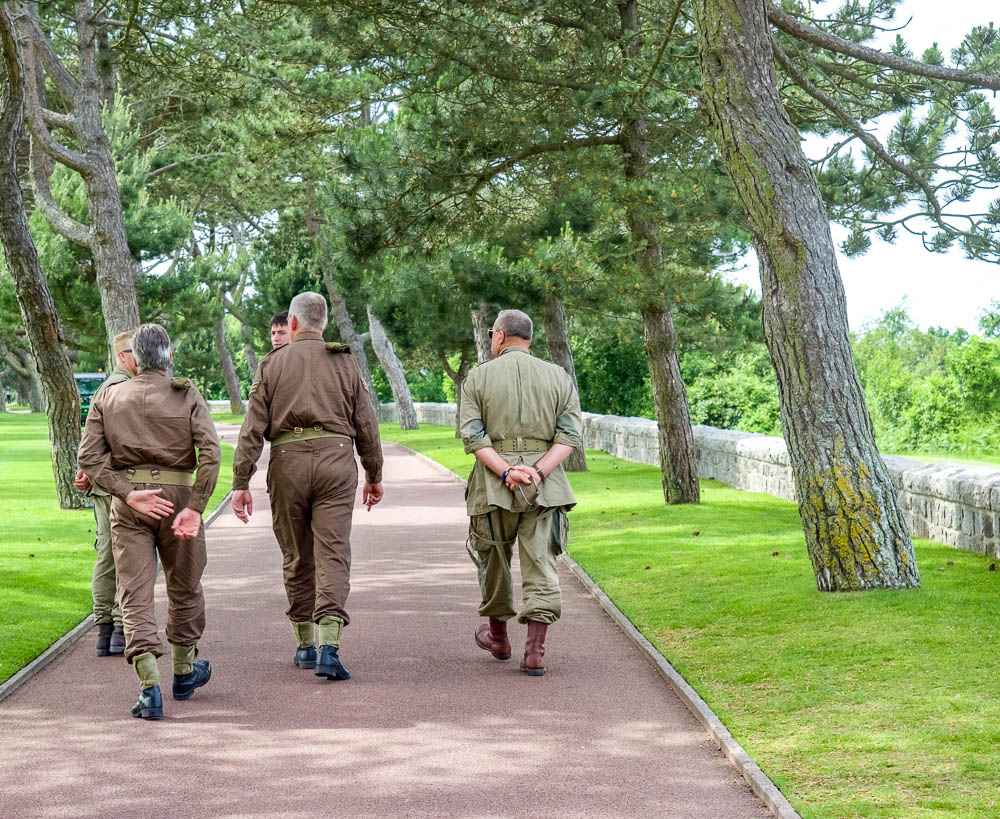
Heaven on Earth
Visit Normandy American Cemetery to experience Heaven as close as you ever will on Earth. Maybe it was just the day I was there on my first visit, but the Normandy American Cemetery is, without a doubt in my mind, the most peaceful place I’ve ever visited.
It was a perfect day: summer sun shining but not hot, the waves rolling in on the empty beach downhill from the cemetery, gentle breezes blowing through the surrounding trees, soft green grass, blue sky dotted with puffy white clouds, absolute silence except for the singing birds. It almost didn’t feel real.
If you like visiting filming locations
If you like visiting WWII locations you’ve seen in movies, you must come here. Saving Private Ryan is one of the most highly rated World War II and D-Day films out there and this place plays such a huge part.
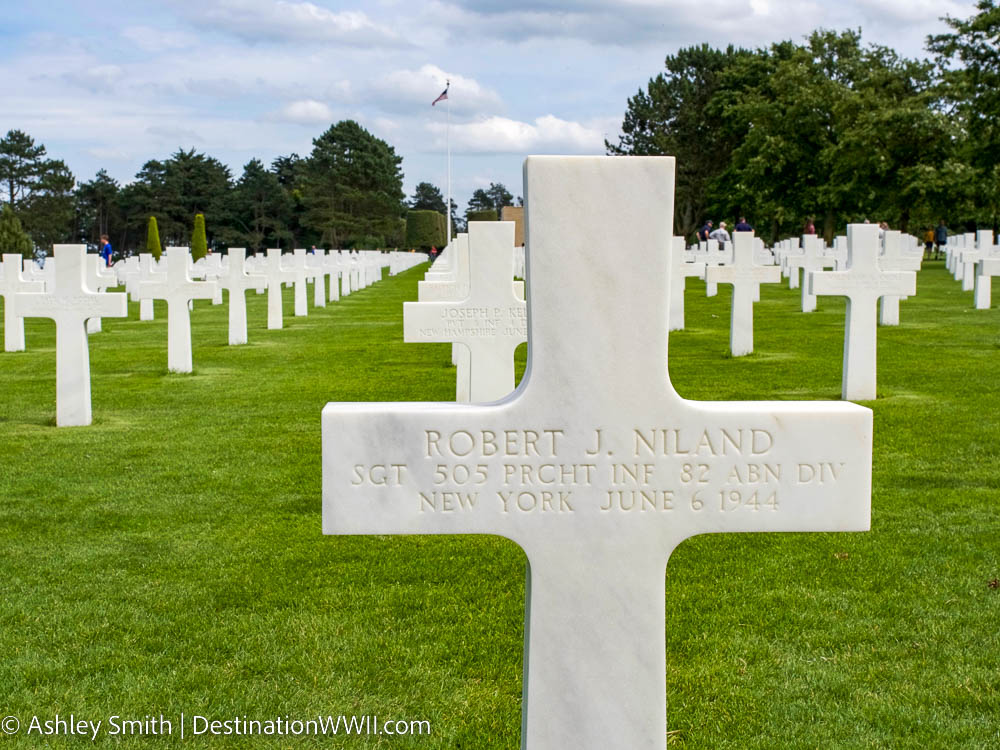
Visit the Niland Brothers
Similarly, you can visit the graves of the Niland brothers–two of the real life brothers who inspired the movie Saving Private Ryan. (Yes, it was based on a true story!) In total there are 45 pairs of brothers buried at Normandy American Cemetery and among them are Robert and Preston Niland. You can find their crosses at Plot F Row 15 Graves 11 and 12, respectively.
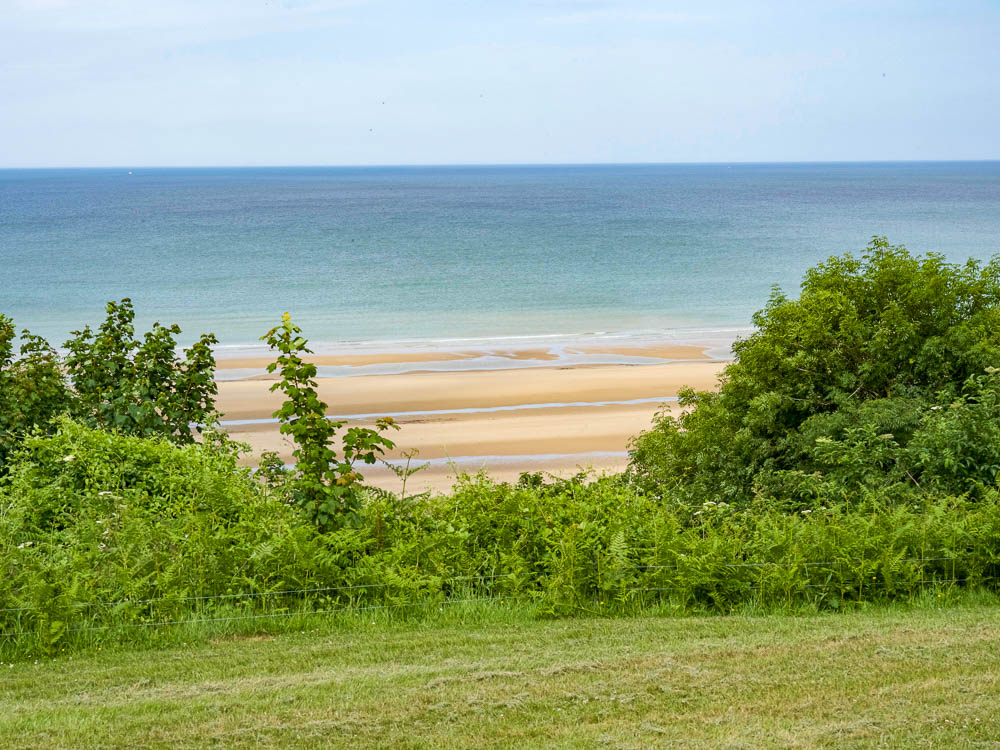
5. Omaha Beach
You can visit Omaha Beach, notoriously where American troops suffered the worst on D-Day, and the experience is surreal. Everything about it will shock you: the massive size, the weight you feel just by being there, and how, this place that was once total Hell on Earth, is also just a pleasant beach surrounded by quaint French cottages.
You’re here, seeing it with your own eyes, getting bit by the sand flies with your own legs, and yet it doesn’t feel real. This can’t possibly be the place you’ve seen on so many screens.
On the beach you’ll find the sculpture of “Les Braves” by French sculptor Anilore Banon, the three parts representing the Wings of Hope, the Rise of Freedom, and the Wings of Fraternity. Behind it you’ll find the D-Day Signal Monument.
Also read: For more must-see D-Day sites in and around Omaha Beach, check out that link for my post on what to see at Omaha Beach: 11+ Inspiring Stops.
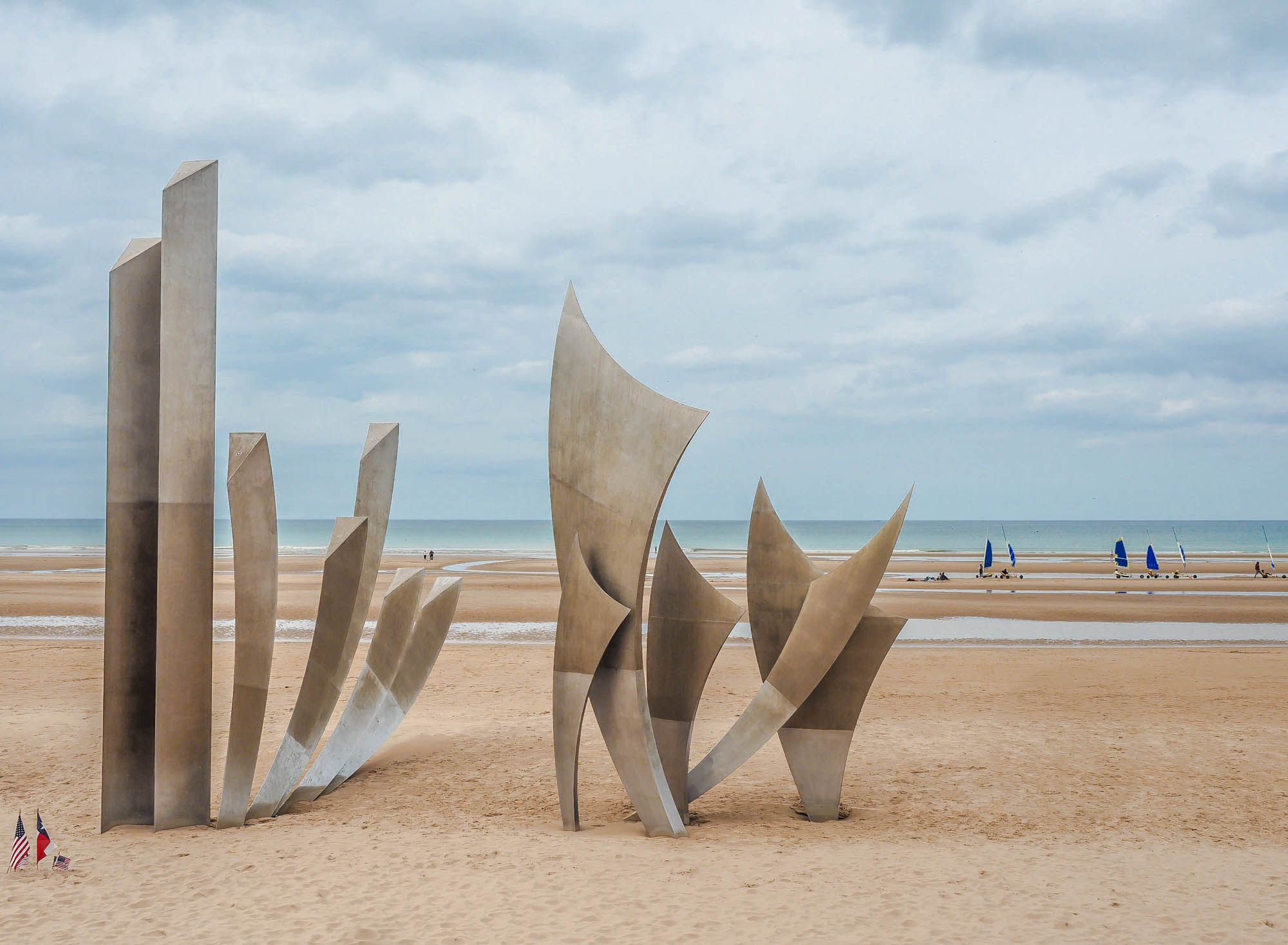
Why Omaha Beach is one of the best D-Day sites to visit in Normandy
Omaha Beach is ground zero for American D-Day history. Almost everything you know about D-Day happened right here. And though there isn’t much to see, Omaha Beach is all about feeling.
You must see it in modern times. It’s fascinating to compare what you’ve seen in movies to the real thing. (This article is a great introduction to that.) These comparisons are everything when it comes to putting the war, especially all of the physical obstacles the troops overcame, into perspective.
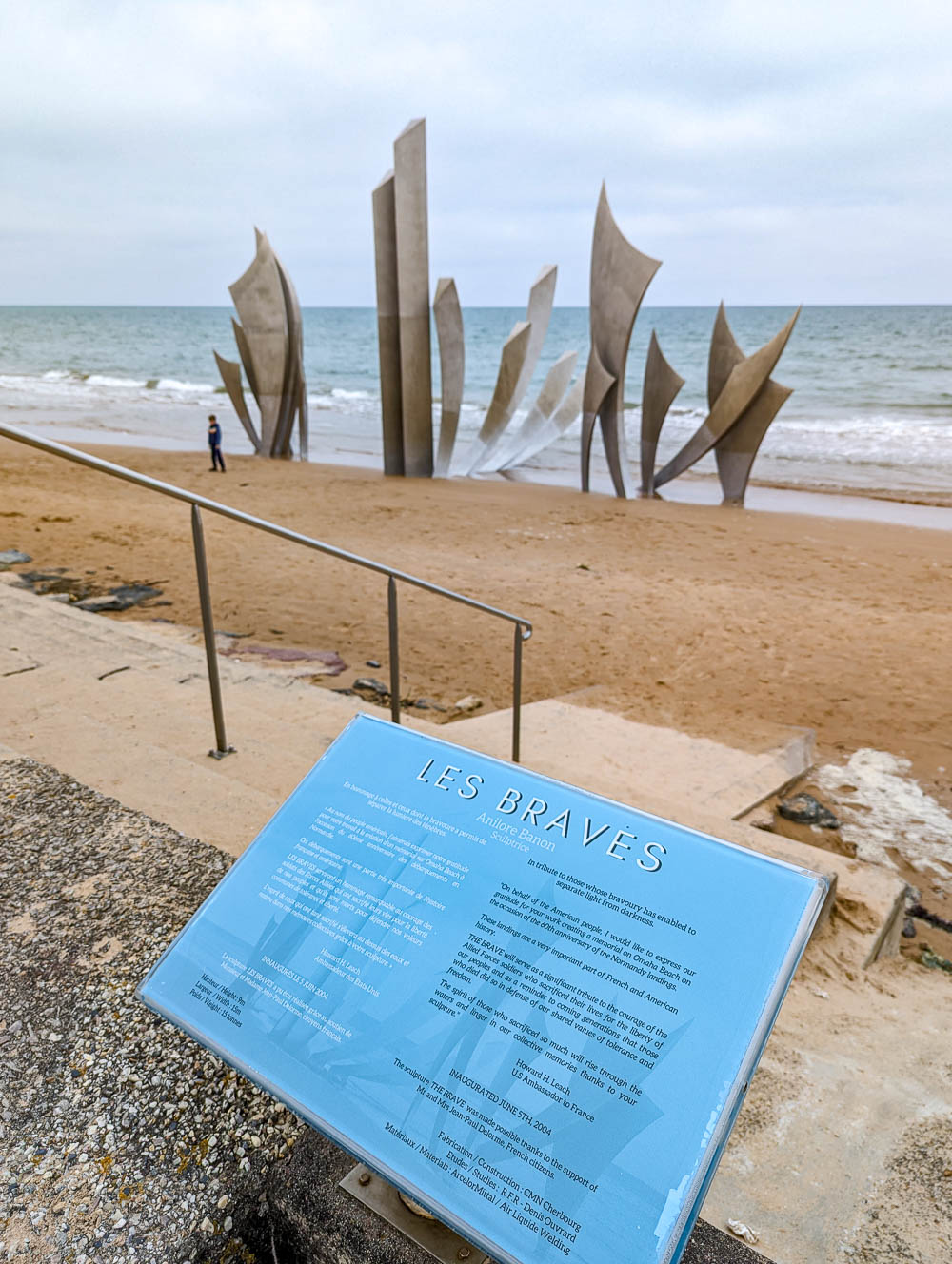
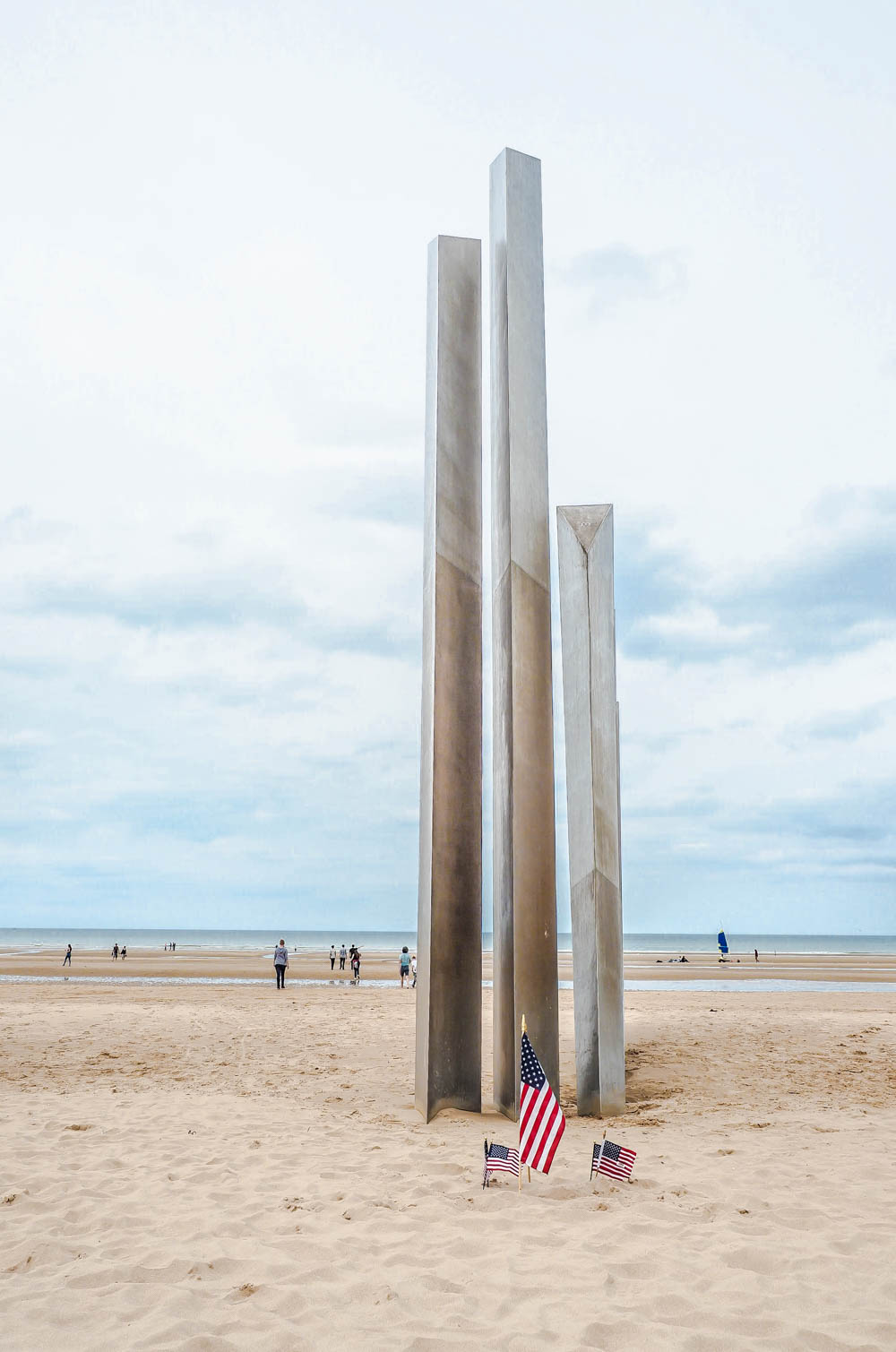
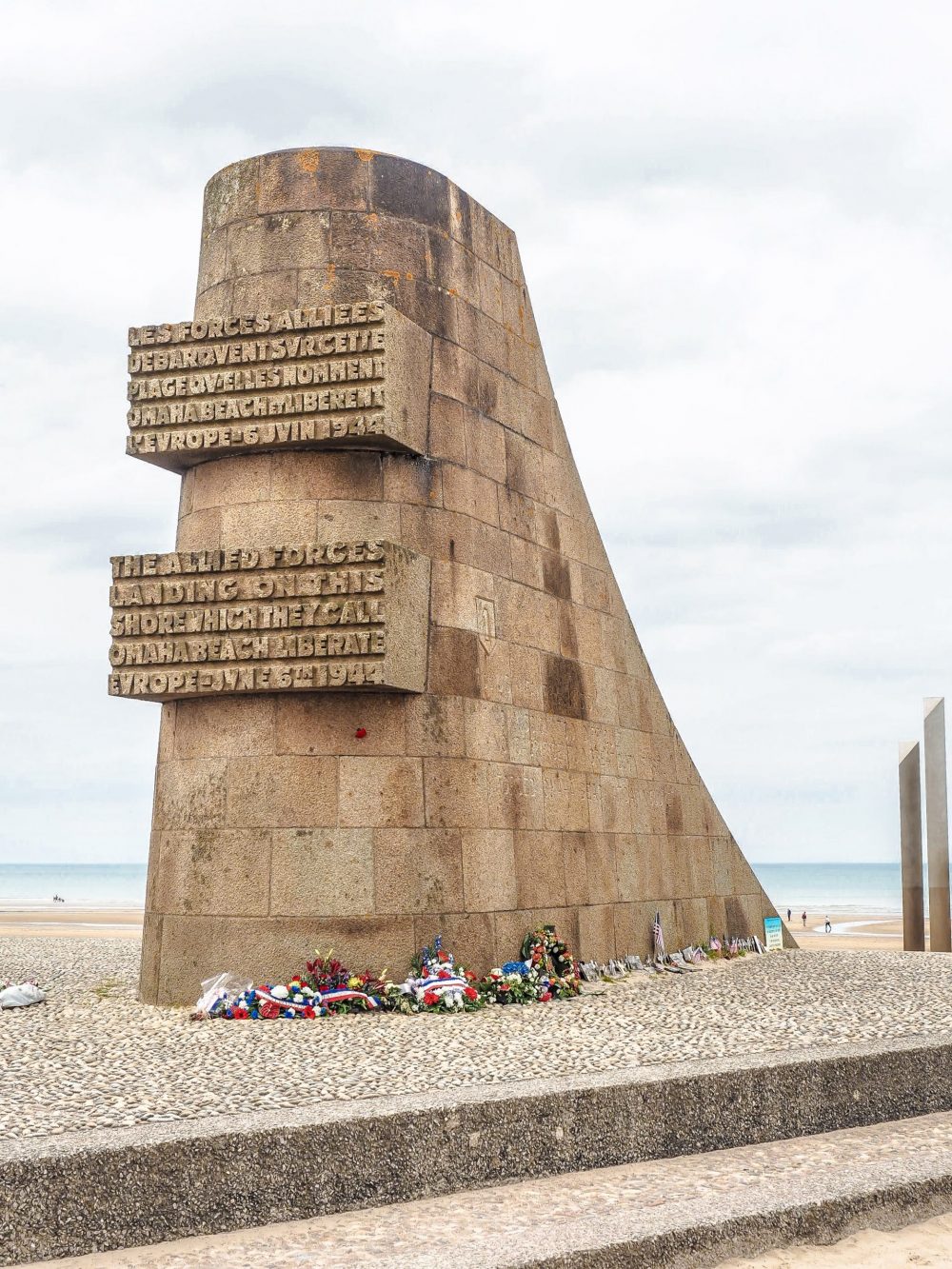
6. Pointe du Hoc
As one of Normandy’s best D-Day sites, Pointe du Hoc proves that nothing is impossible. Pointe du Hoc is a 100-foot cliff overlooking the English Channel. It’s the highest point between Utah Beach and Omaha Beach and at the time was fortified with a wall of German gun casemates (like the ones at Longues-sur-Mer).
Pointe du Hoc on D-Day
On the morning of June 6th, the US Army captured Pointe du Hoc after scaling the cliffs—a feat many believed to be impossible. And when you stand on the cliff yourself, you’ll agree 110%.
They did so with the use of grappling hooks, ropes, and ladders, much of that fired from rocket launchers on their landing crafts. These guys scaled a cliff with just rope while being shot at with automatic weapons from all angles. This is the definition of a hero in case you weren’t aware. This stop motion, little-green-army-men re-enactment portrays the scene perfectly.
Today, Pointe do Hoc still has its German gun casements and bunkers, is completely covered in bomb craters, and serves as home to a surprisingly large population of sheep. You can walk the entire site, go inside the bunkers, look over the cliffs, pay your respects at the memorials, and I even got to see a sheep being born. True story.
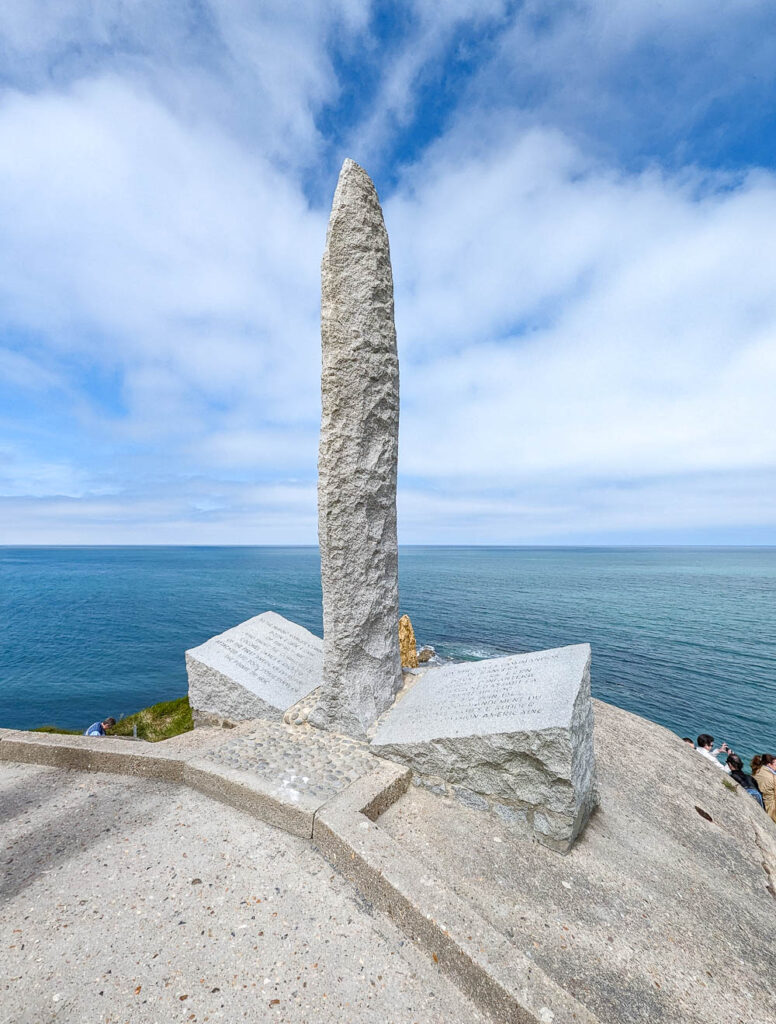
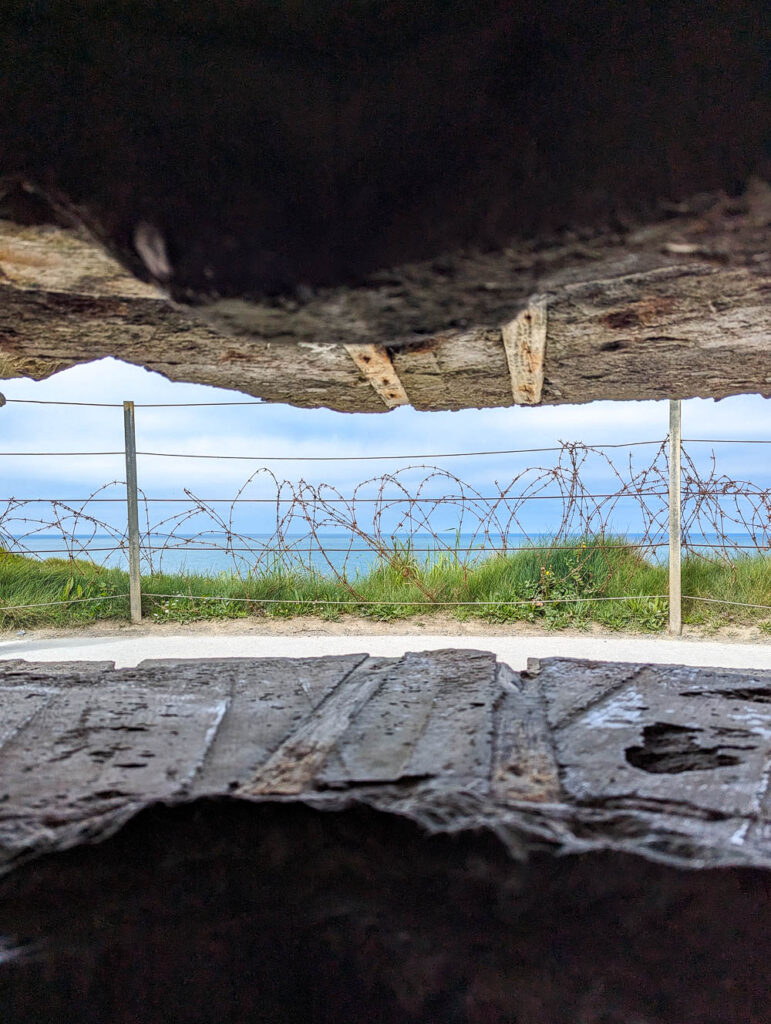
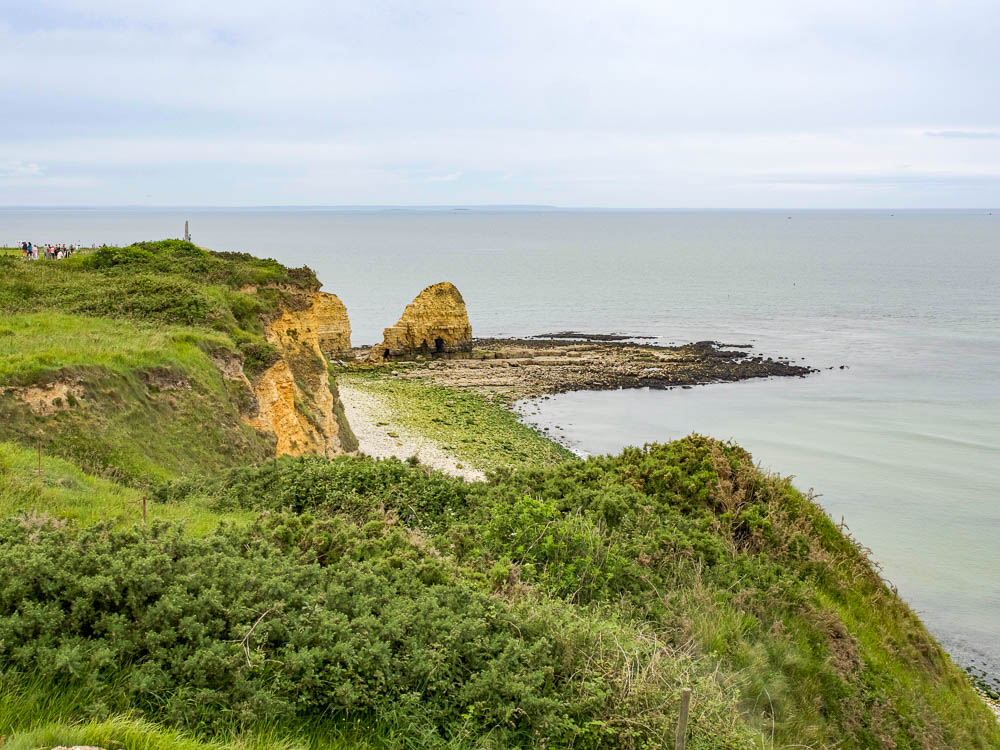
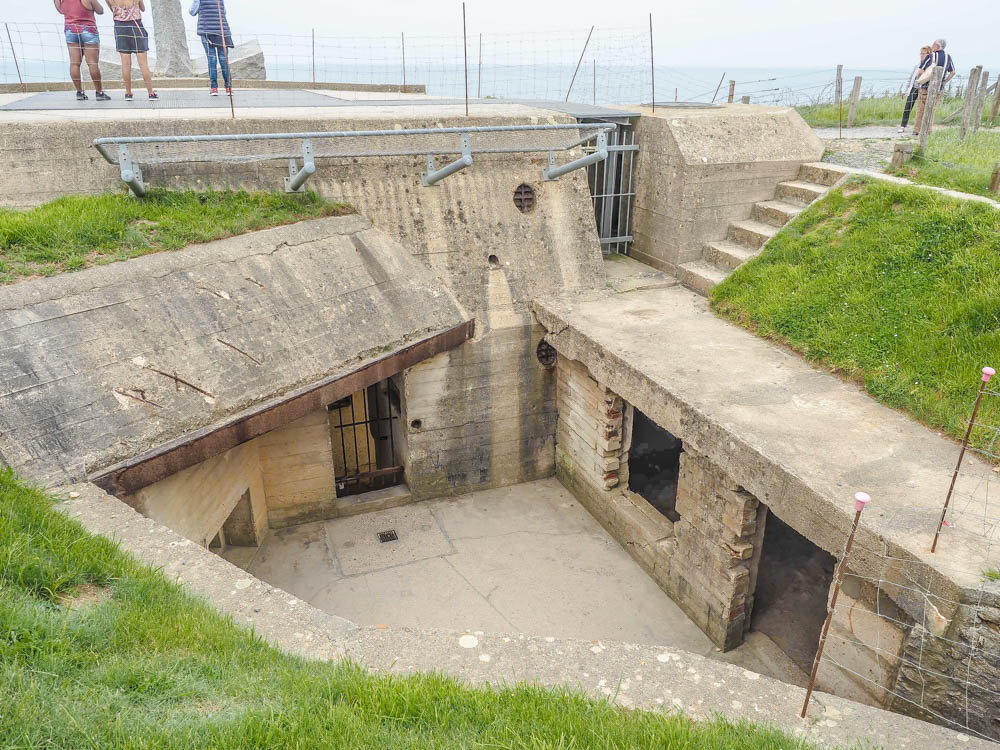
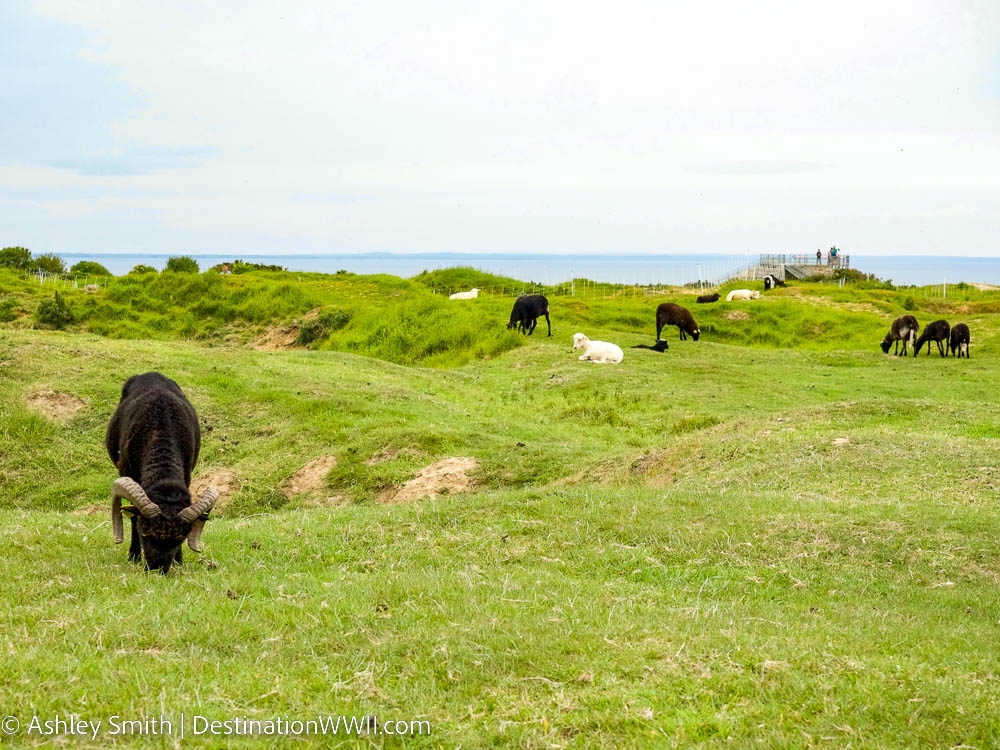
Why Pointe du Hoc is one of the best D-Day sites to visit in Normandy
You can see what ‘impossible’ really looks like. Nothing you need to do after this will seem too difficult, too inconvenient, or worth complaining about. Next time you think about calling something you have to do “impossible,” think of Pointe du Hoc.
To see the the bomb craters. The bomb craters at Pointe du Hoc provide a visual you can’t get anywhere else. No other D-Day sites have bomb craters like the ones you’ll see here. There are so many; and they’re still here. You must see this for yourself. (See what Pointe du Hoc looks like from above here.)

7. La Cambe German War Cemetery
Visit La Cambe German War Cemetery because travel is all about growing as a person… but also about throwing your mind, your beliefs, and your emotions for a loop.
Visiting a German cemetery in Normandy just days after the anniversary of D-Day may seem… strange? treacherous, even? And you’re absolutely right; it kinda does.
But then you get there and what you experience is something different and unexpected. You’ll discover there’s a moment when you stop thinking of these German soldiers exclusively as villains.
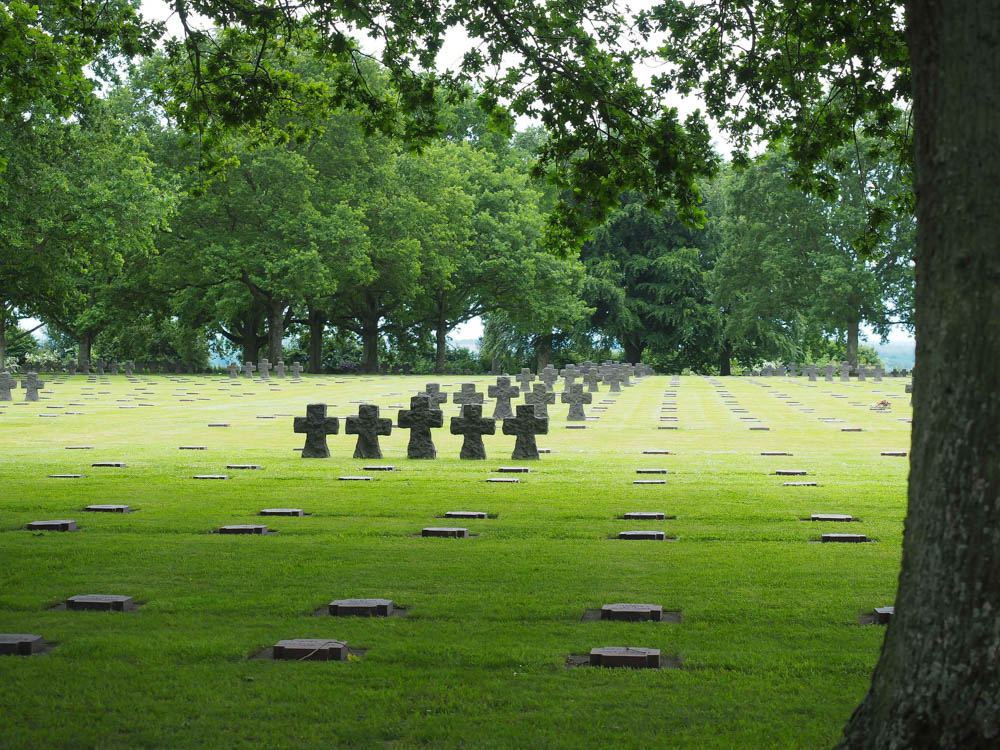
Sure, many of them were horrible people but most probably didn’t want to die fighting our soldiers any more than ours wanted to die fighting them. You know about Hitler… did they have a choice? (I’m asking honestly; this is a highly debatable question.)
Everyone was a victim during WW2; no one wins in war. And some cemeteries will get to you regardless of who is buried there. It’s just in their nature.
About La Cambe German Cemetery
La Cambe German Cemetery started out as a cemetery for both American and German soldiers. They eventually moved the Americans either back to the US or to the aforementioned American Cemetery and more Germans were moved in.
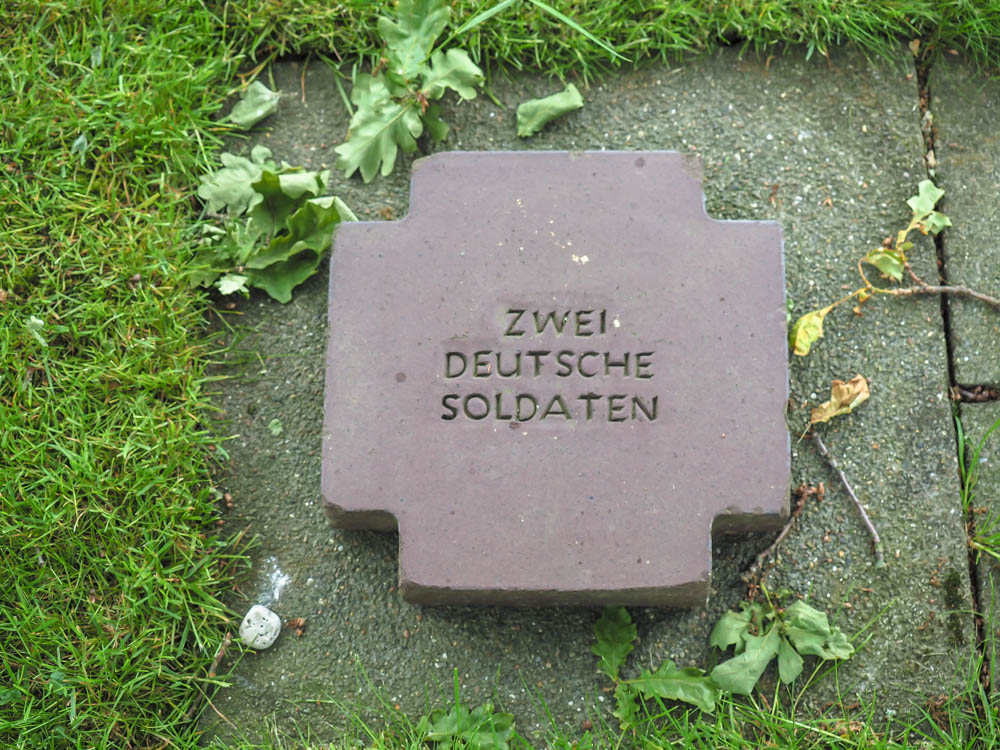
Today, the total grave count at La Cambe stands at 21,245. This makes it the largest cemetery in Normandy and the largest German war cemetery. And it’s all packed into a space one-tenth the size of Normandy American Cemetery. All belong to victims of the D-Day invasion and resulting battles, and most of these soldiers were close to being teenagers.
They’ve adorned the cemetery with imposing black stone crosses and the whole site seems to have been designed under the “heavy and dark” theme. (The German cemetery in Bastogne follows the same theme.)
At the cemetery’s center is a large mound under a statue of a woman and a man meant to represent the mothers and fathers who lost children in the war. The mound itself is not symbolic—it actually holds the unidentified bodies of almost 300 German soldiers. Graves here are a 2-for-1 deal and some don’t even have names at all.
Be as angry as you want to be, just don’t forget these men were fellow human beings once. Men who loved family members, felt loneliness, had best friends, played sports, wrote love letters, and probably, at some point, did something nice for someone they didn’t know.
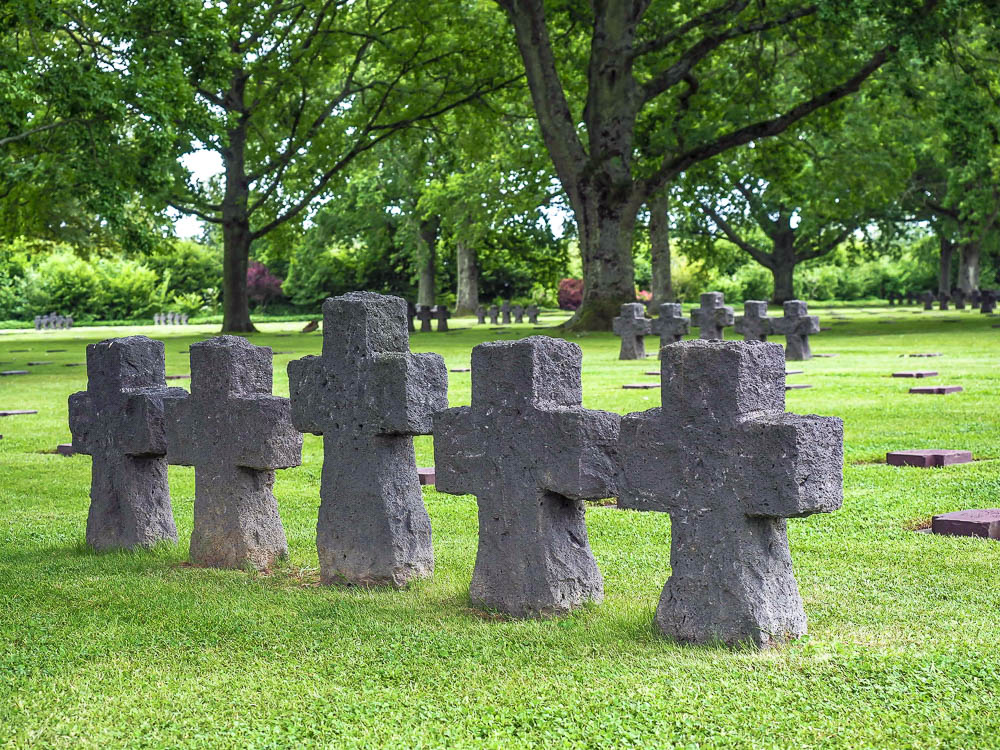
Why La Cambe is one of the best D-Day sites to visit in Normandy
To see (and feel) the stark contrasts (both visual and emotional) between the American and German cemeteries. Normandy American Cemetery is white, bright, open, and beautiful. It leaves you feeling so grateful you think your heart will burst.
La Cambe German Cemetery is profoundly heavy and dark. You’ll leave feeling all around confused, disheartened, and understandably a little pissed.
Visiting La Cambe helps you understand how equal we all are. The events of D-Day have doubtlessly left us all feeling sad, but we Americans don’t own the rights to those feelings. Experiencing a German cemetery helps paint a broader picture of the war. It wasn’t just Us vs. Them; it was All of Us vs. Intolerance and Hate.
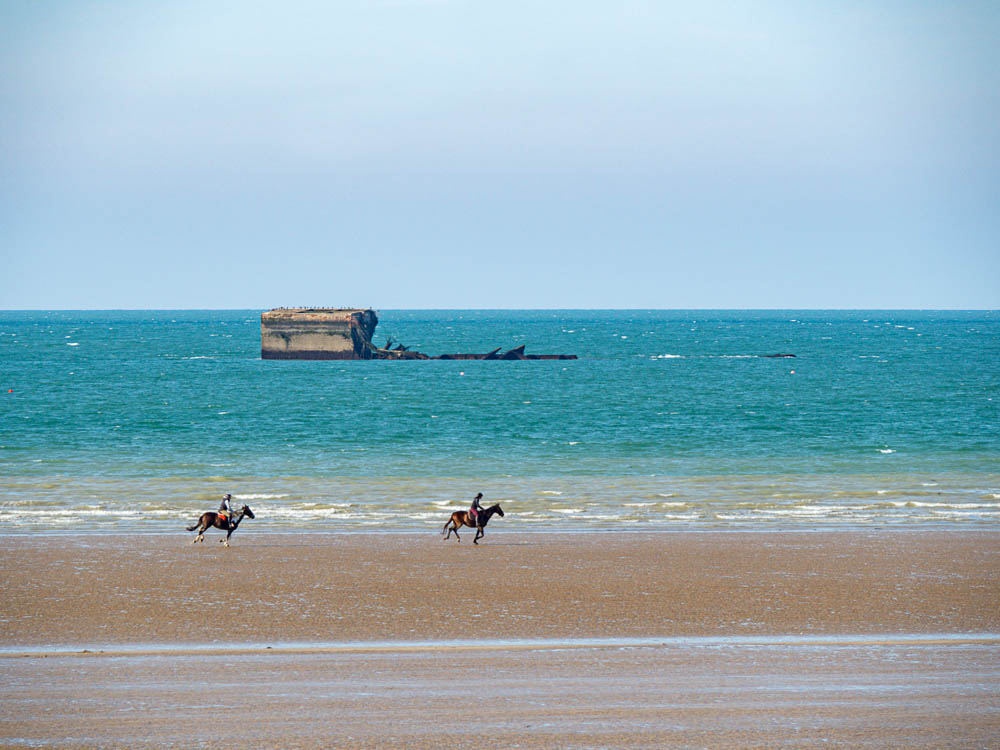
Books to read for your trip to Normandy
As always, I recommend gearing up for your trip to the best D-Day sites to visit in Normandy by reading all the books and watching all the movies. Here’s where you can start:
Band of Brothers (Stephen Ambrose)
New York Times bestseller about the US Army’s 101st Airborne Division. This book tells the true stories of these men and their leaders from enlistment, to parachuting into France early on the morning of D-Day, and on to their capture of Hitler’s Bavarian outpost, the Eagle’s Nest in Berchtesgaden. Stephen Ambrose is a great writer and his books are easy to follow and endlessly engaging.
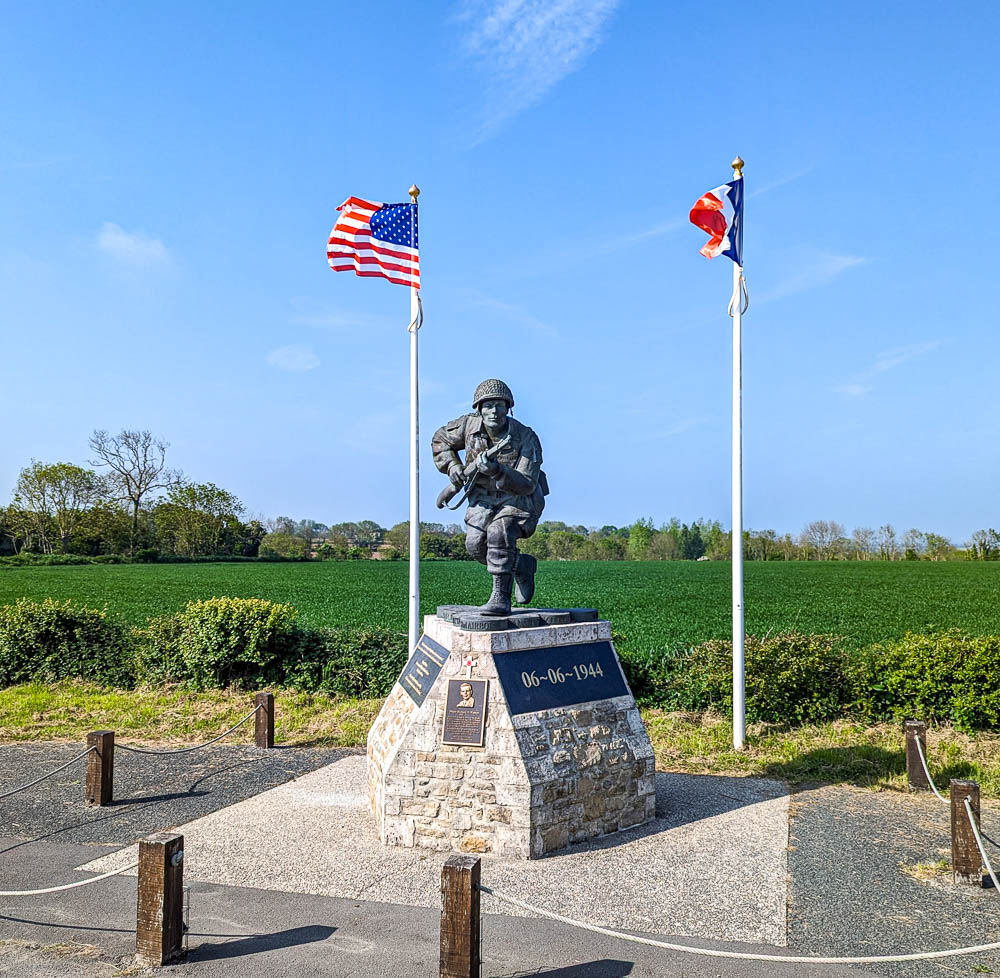
D Day: June 6, 1944 (Stephen Ambrose)
Amazon says: “Stephen E. Ambrose’s D-Day is the definitive history of World War II’s most pivotal battle, a day that changed the course of history.” And since it’s Stephen Ambrose it’s bound to be perfection.
Double Cross: The True Story of the D-Day Spies (Ben Macintyre)
A little D-Day behind-the-scenes action for you. Amazon says: “[Operation Fortitude] was the most sophisticated and successful deception operation ever carried out, ensuring Allied victory at the most pivotal point in the war.” Reviewers say it’s more for history and WW2 buffs than it is for spy novel enthusiasts.
Omaha Beach: D-Day, June 6, 1944 (Joseph Balkoski)
John Hillen of the New York Post says: “Balkoski’s depiction of ‘Bloody Omaha’ is the literary accompaniment to the white-knuckle Omaha Beach scene that opens Steven Spielberg’s Saving Private Ryan.” If you’ve seen Saving Private Ryan, you know that’s quite a description!
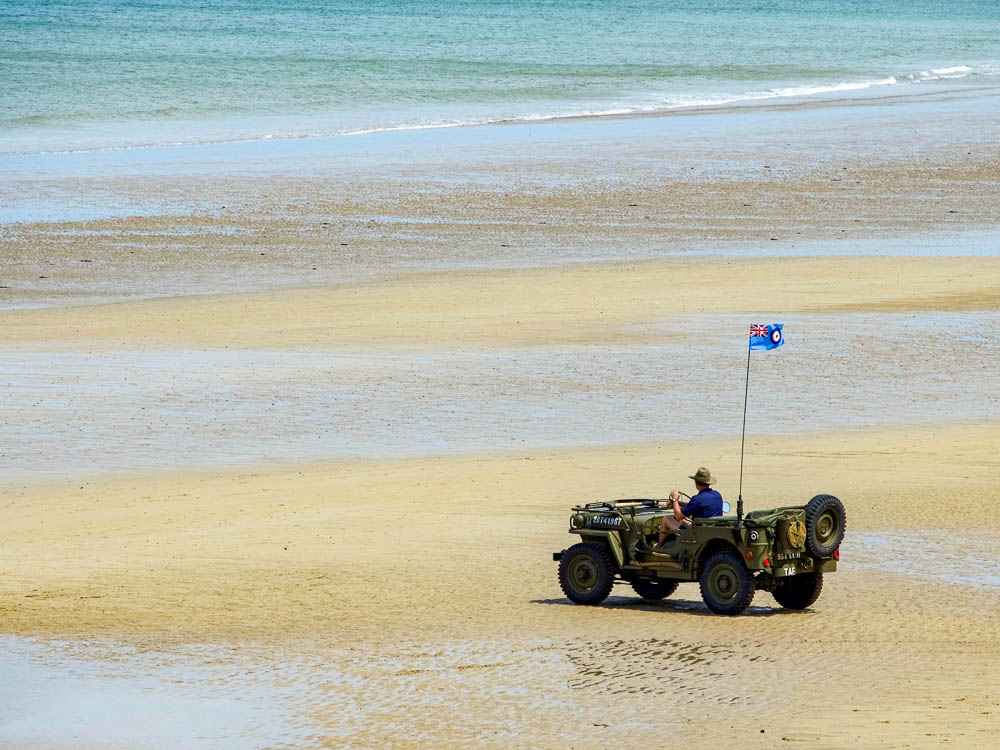
Movies to watch before your trip to Normandy
Saving Private Ryan (1998)
Amazon description: “Seen through the eyes of a squad of American soldiers, the story begins with World War II’s historic Omaha Beach D-Day invasion, then moves beyond the beach as the men embark on a dangerous special mission. Captain John Miller (Tom Hanks) must take his men behind enemy lines to find Private James Ryan, whose three brothers have been killed in combat.”
Film magazine Empire describes the 27-minute Omaha Beach landing scene as the “best battle scene of all time.” That same scene was named Number 1 on TV Guide’s list of 50 Greatest Movie Moments. Watch this movie!
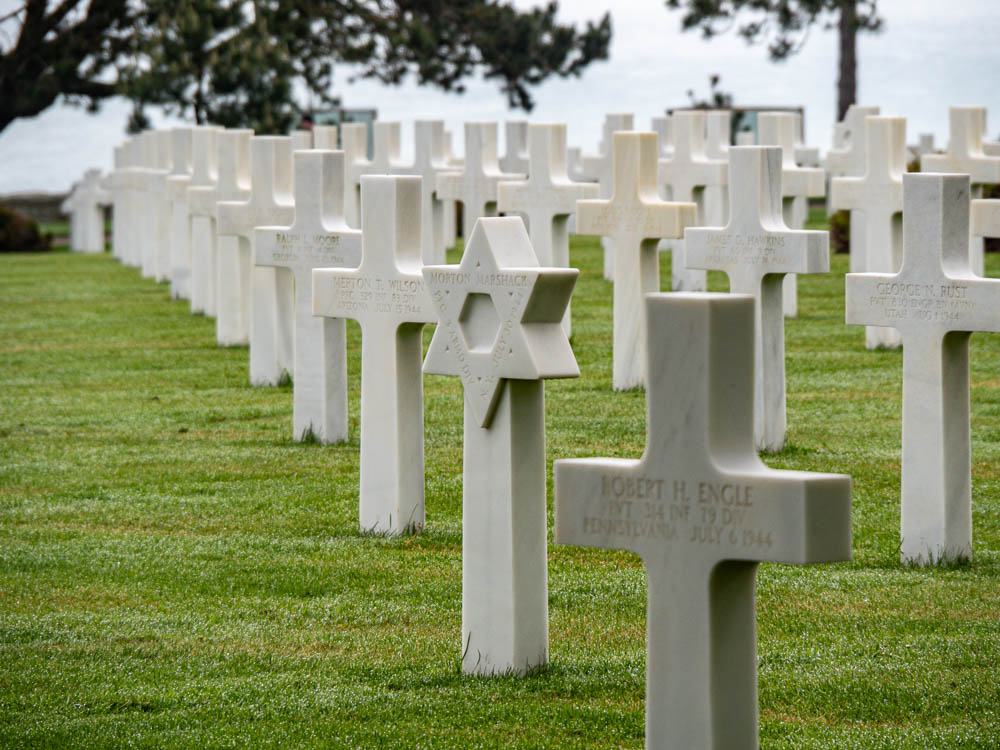
The Longest Day (1962)
Known as the definitive D-Day movie and full of stars: John Wayne, Sean Connery, and Henry Fonda (among many others). It depicts D-Day from the perspectives of both the Allied and German forces and uses actors and military consultants who personally fought in the war. You can also check out my 2-day Normandy itinerary inspired by the movie.
Band of Brothers (2001)
An epic, 10-part HBO miniseries based on the book by Stephen Ambrose. Steven Spielberg and Tom Hanks produced it–just as they did Saving Private Ryan. Some of its biggest stars include Damian Lewis, Michael Fassbender, Donnie Wahlberg, Ron Livingston, David Schwimmer, and Tom Hardy.
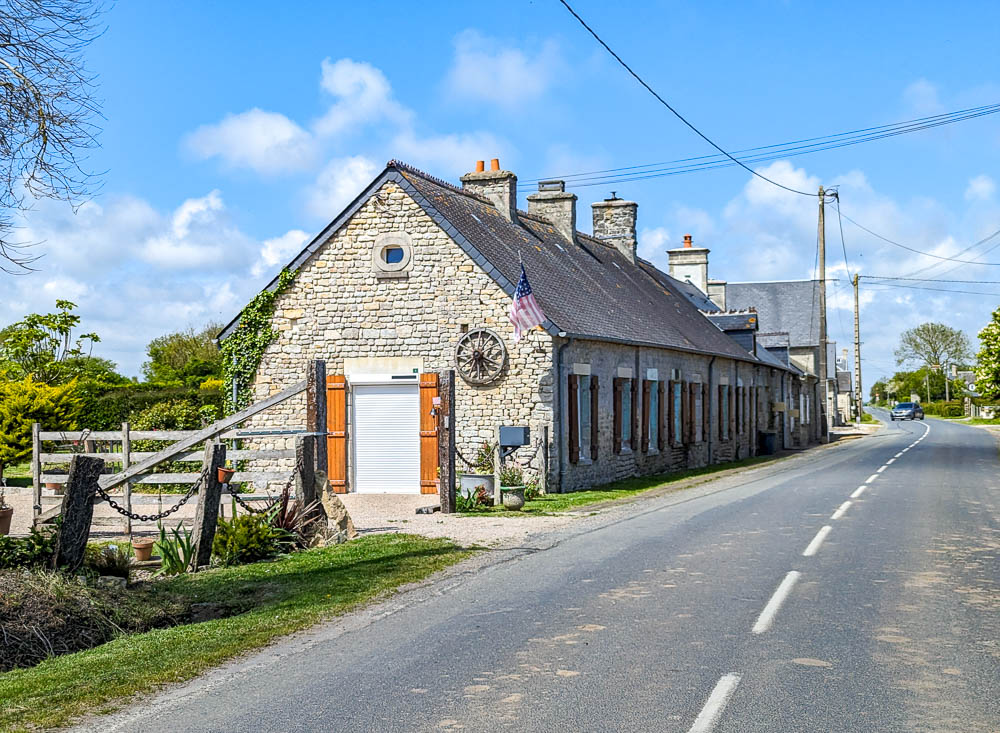
Ike – Countdown to D-Day (2004)
Amazon description: “IKE: COUNTDOWN TO D-DAY follows the 90 terrifying days leading up to the invasion as General Dwight D. Eisenhower decides the fates of thousands of soldiers while managing complex strategic relationships with British Prime Minister Winston Churchill, American General George S. Patton, Britain’s Field Marshall Bernard Montgomery and French President Charles de Gaulle.
In this climate, one man, Dwight Eisenhower, pulled the world’s leaders together for one of history’s most infamous battles.”
Storming Juno (2010)
Half movie, half documentary. Juno Beach was one of the five D-Day landing beaches and invaded by our Canadian allies. Storming Juno portrays Canada’s role in D-Day through the true stories of paratroopers, tank crewmen, and regular infantry.
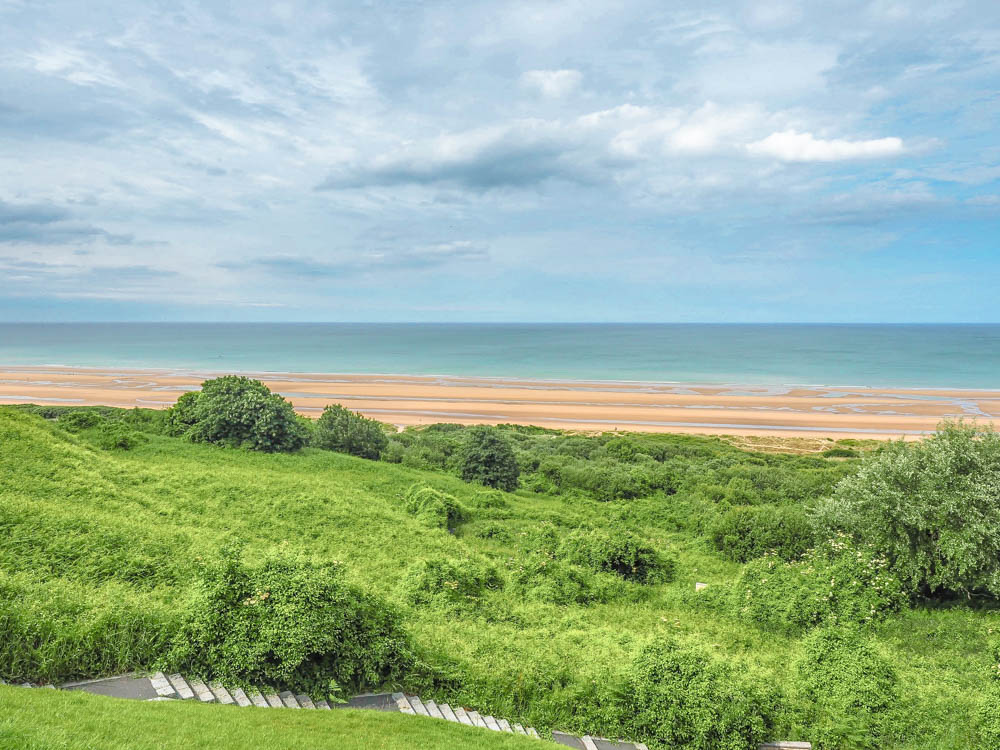
More info for your day in Normandy
- Hotels: Find great places to stay in Normandy here on Booking.com (Expedia and Hotels.com often have great deals also.) VRBO is best for vacation rentals.
- Rental cars: Book the best local rental car deals here.
- For Normandy tours: Check out the best local options and the best day tours from Paris here.
- Travel planning: Pick up a Normandy guidebook and this super helpful France customs and culture guide.
- Be sure to watch Saving Private Ryan, The Longest Day, and Band of Brothers before your visit!
- Want more? See all my Normandy posts here.
Like this post? Have questions about visiting the best D-Day sites in Normandy? Let me know in the comments below. Have a great time in France!

Save this info, pin these images:
